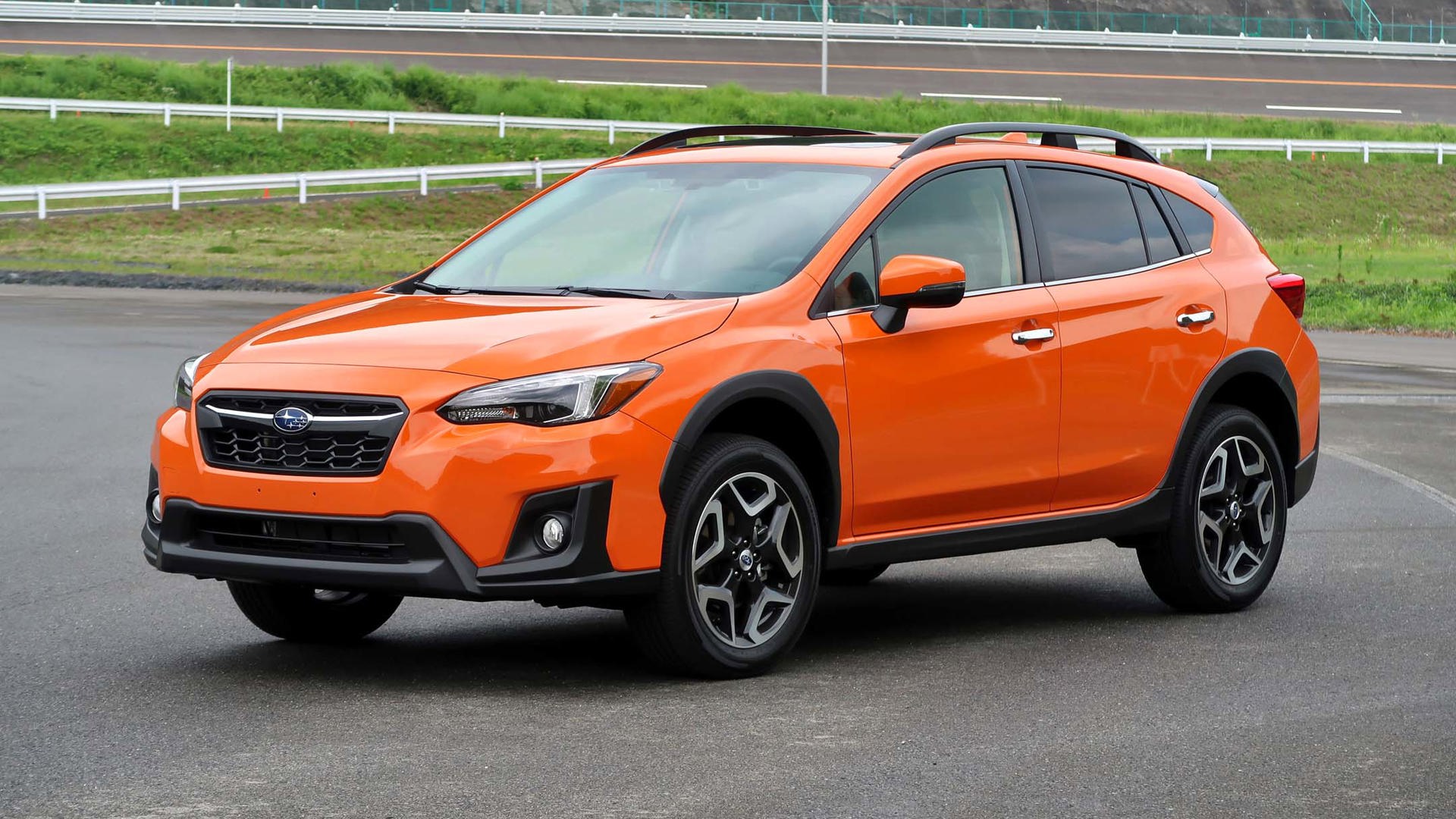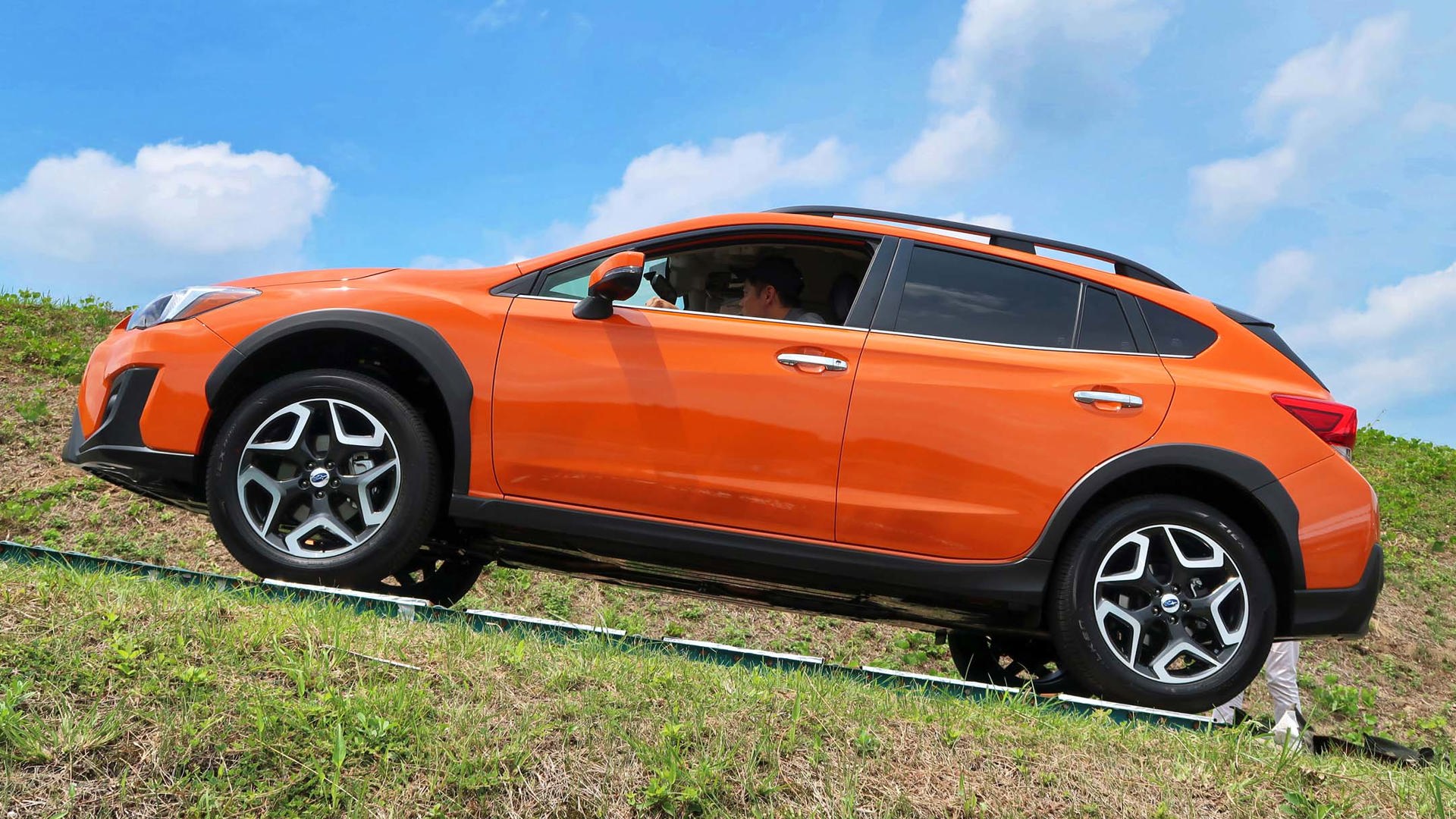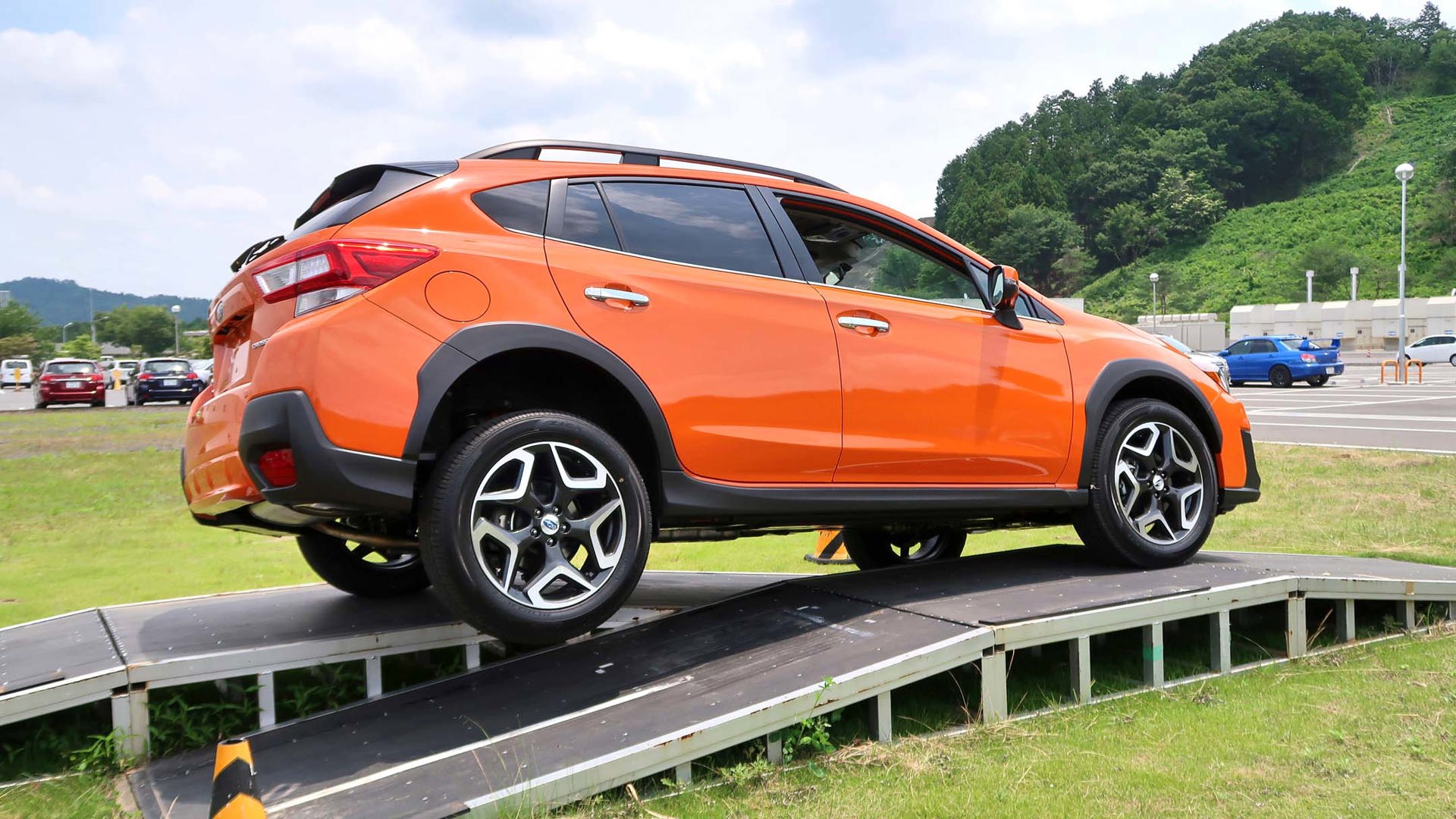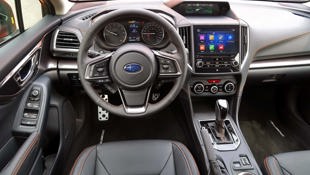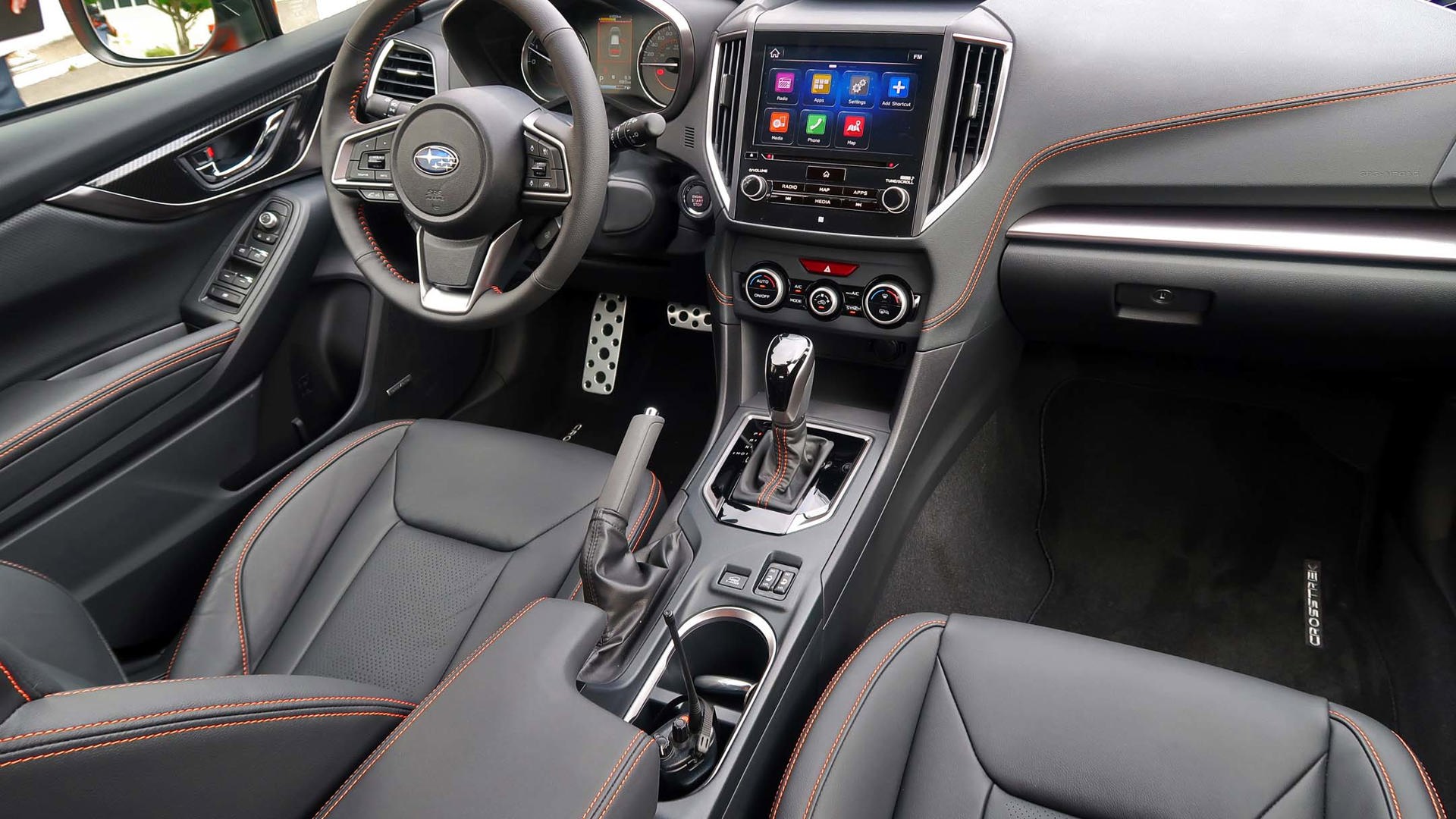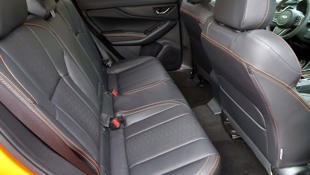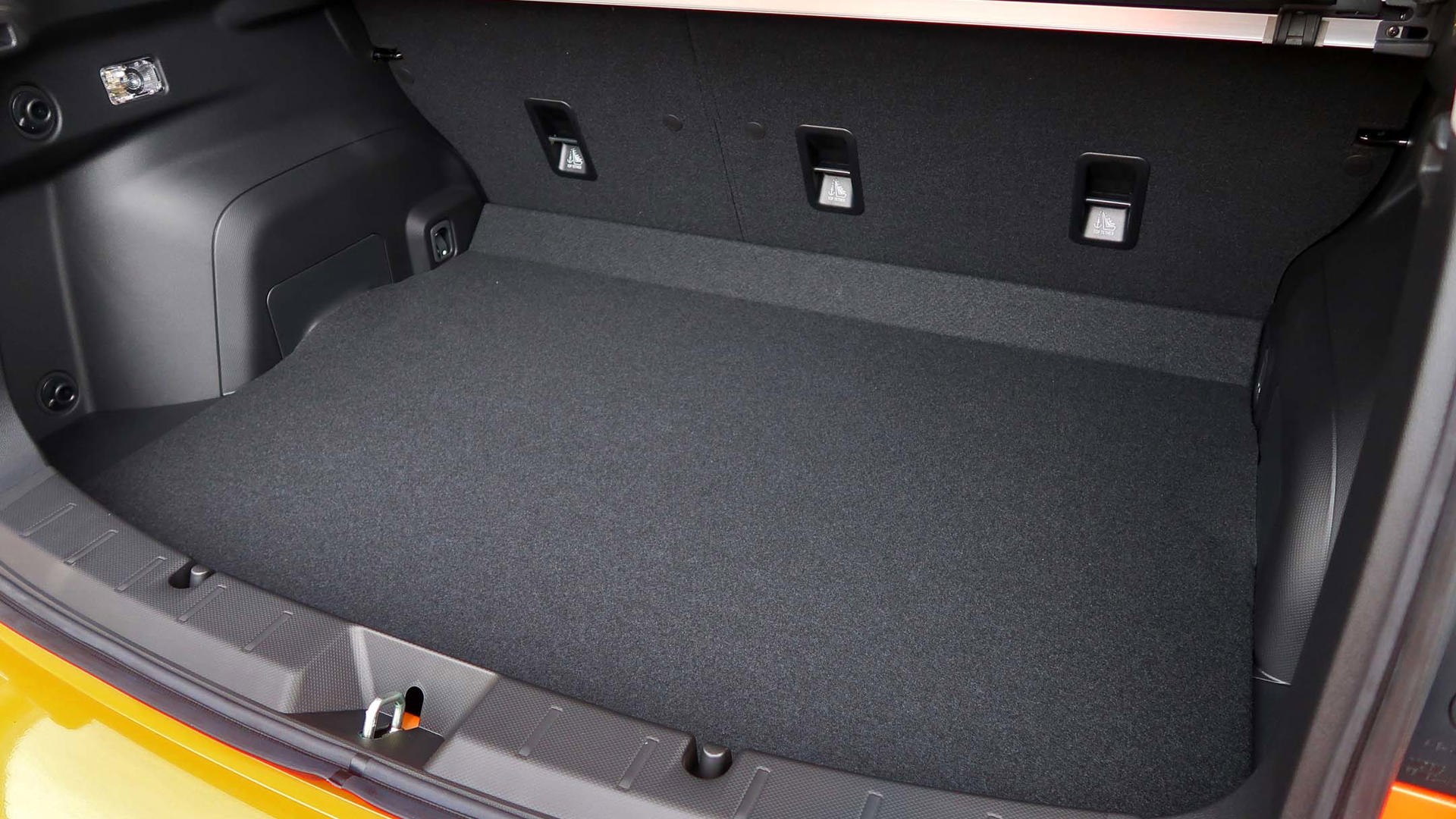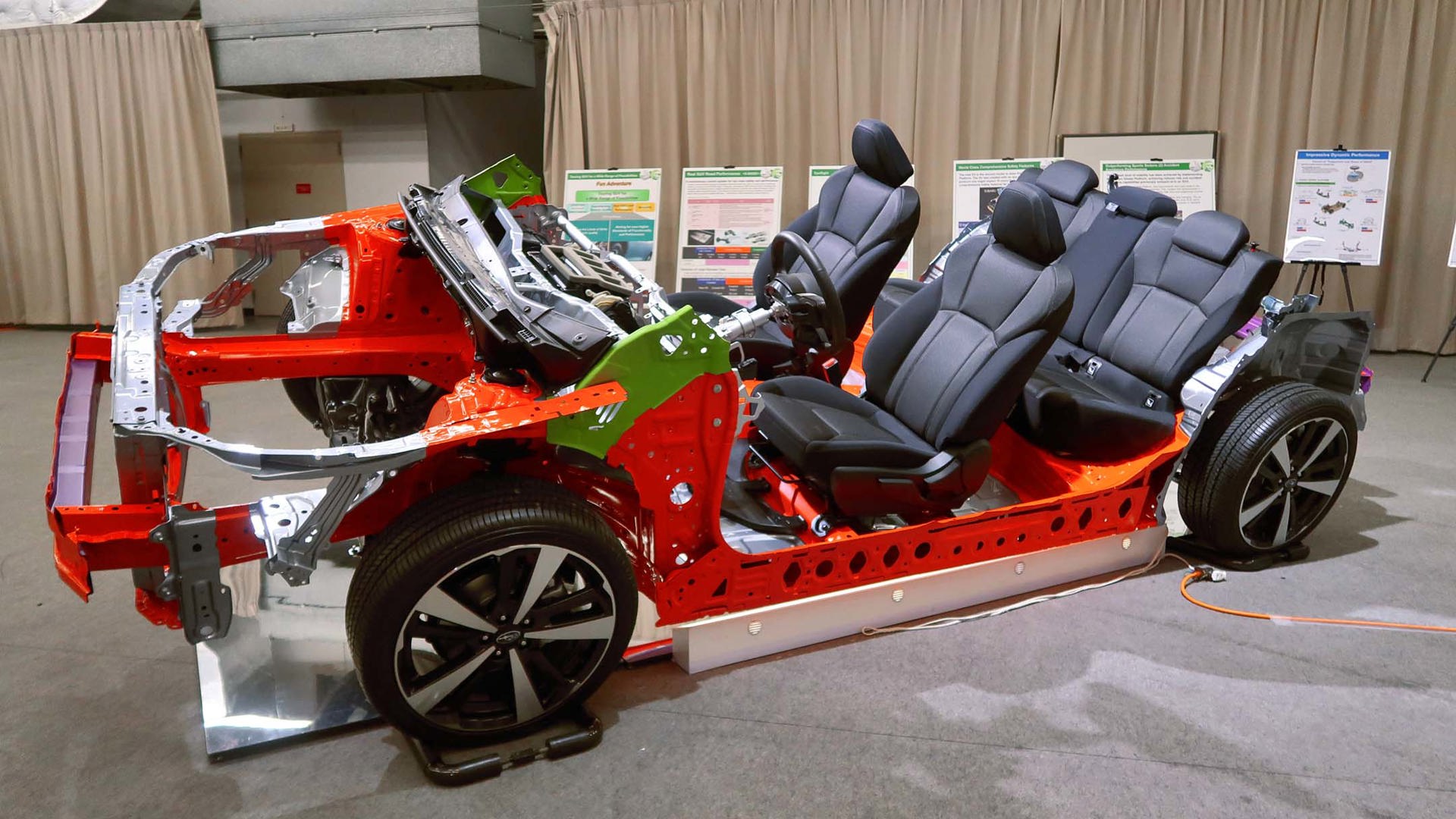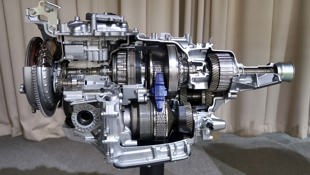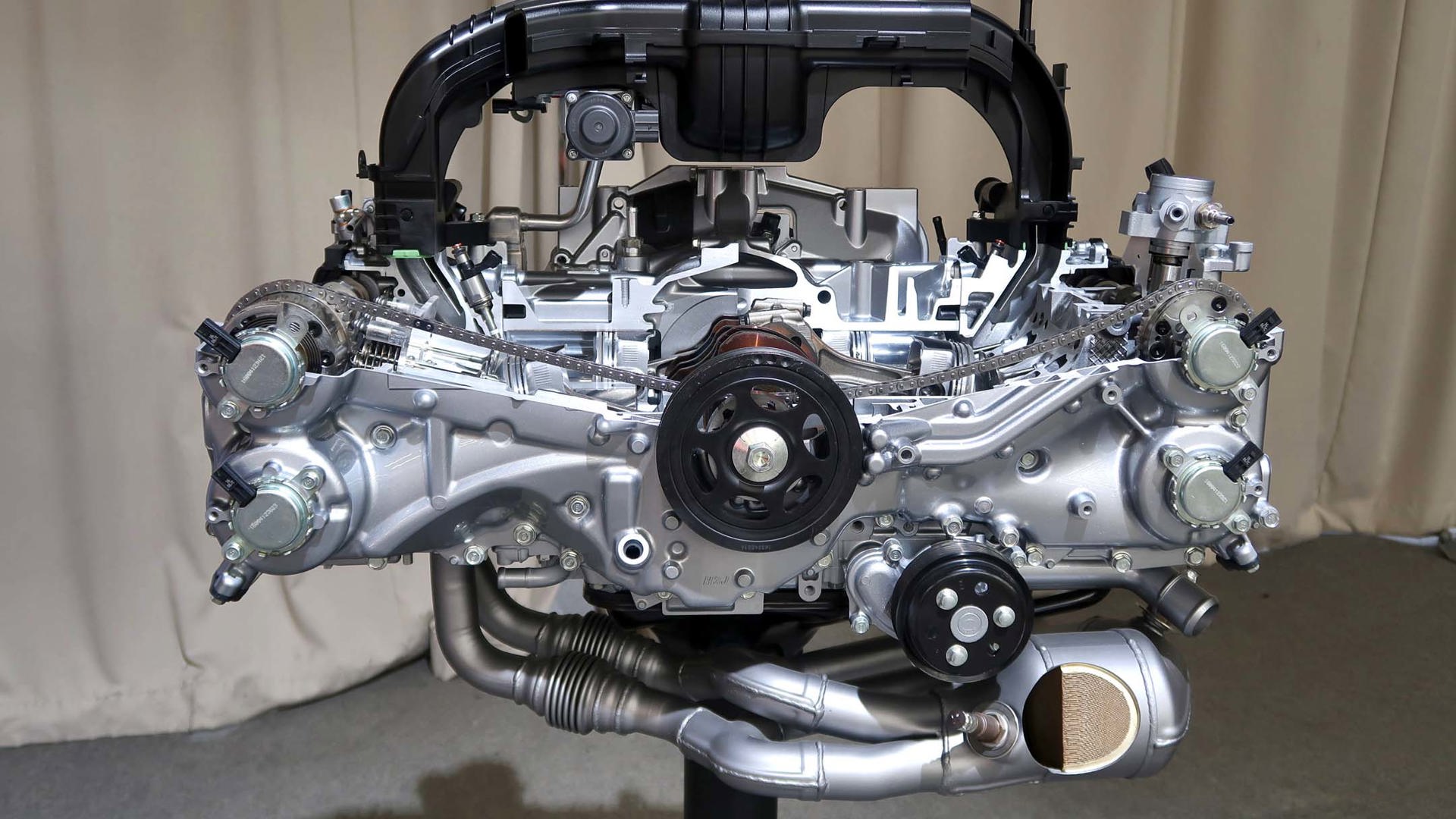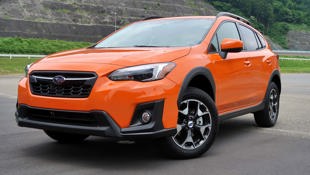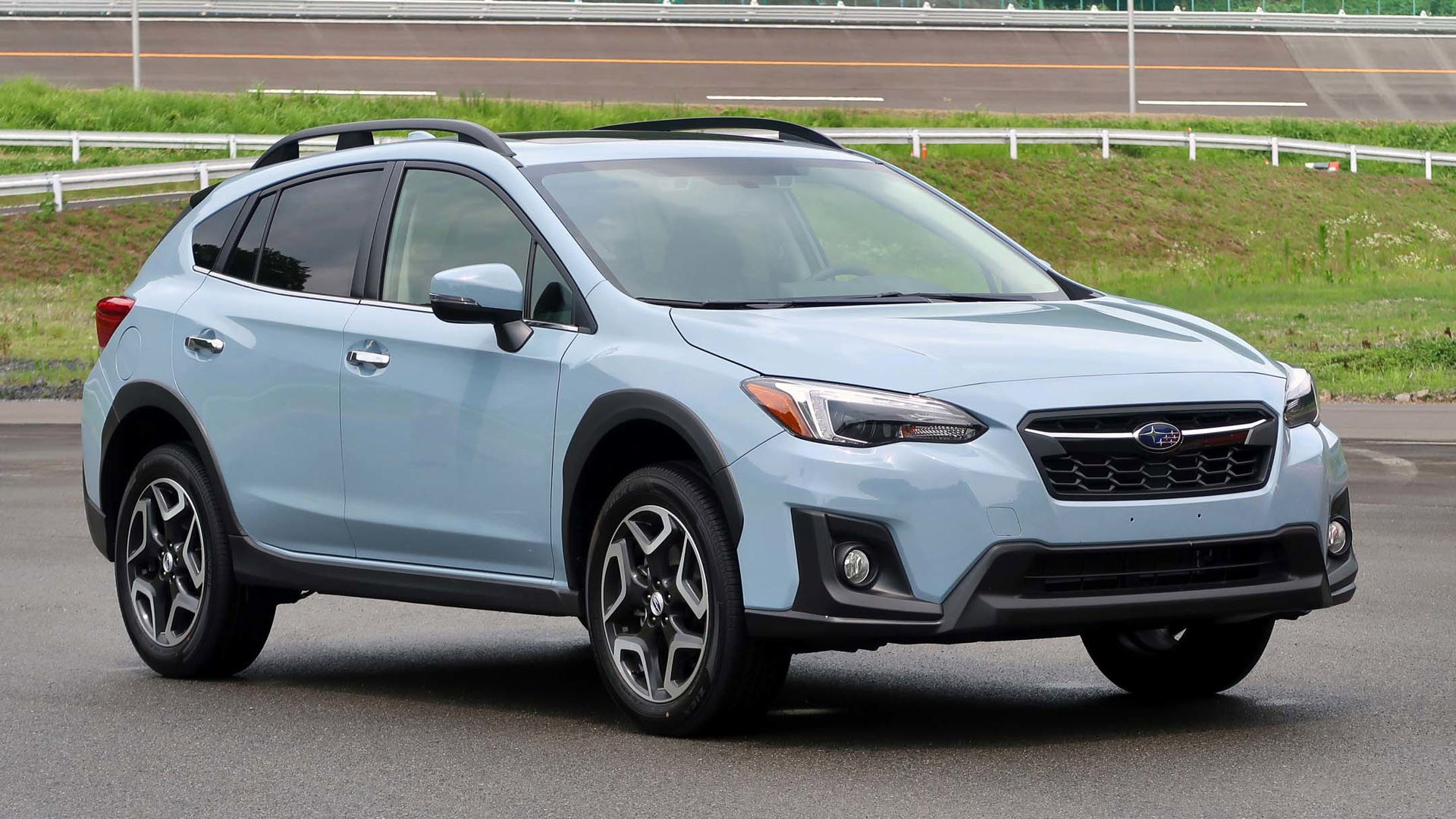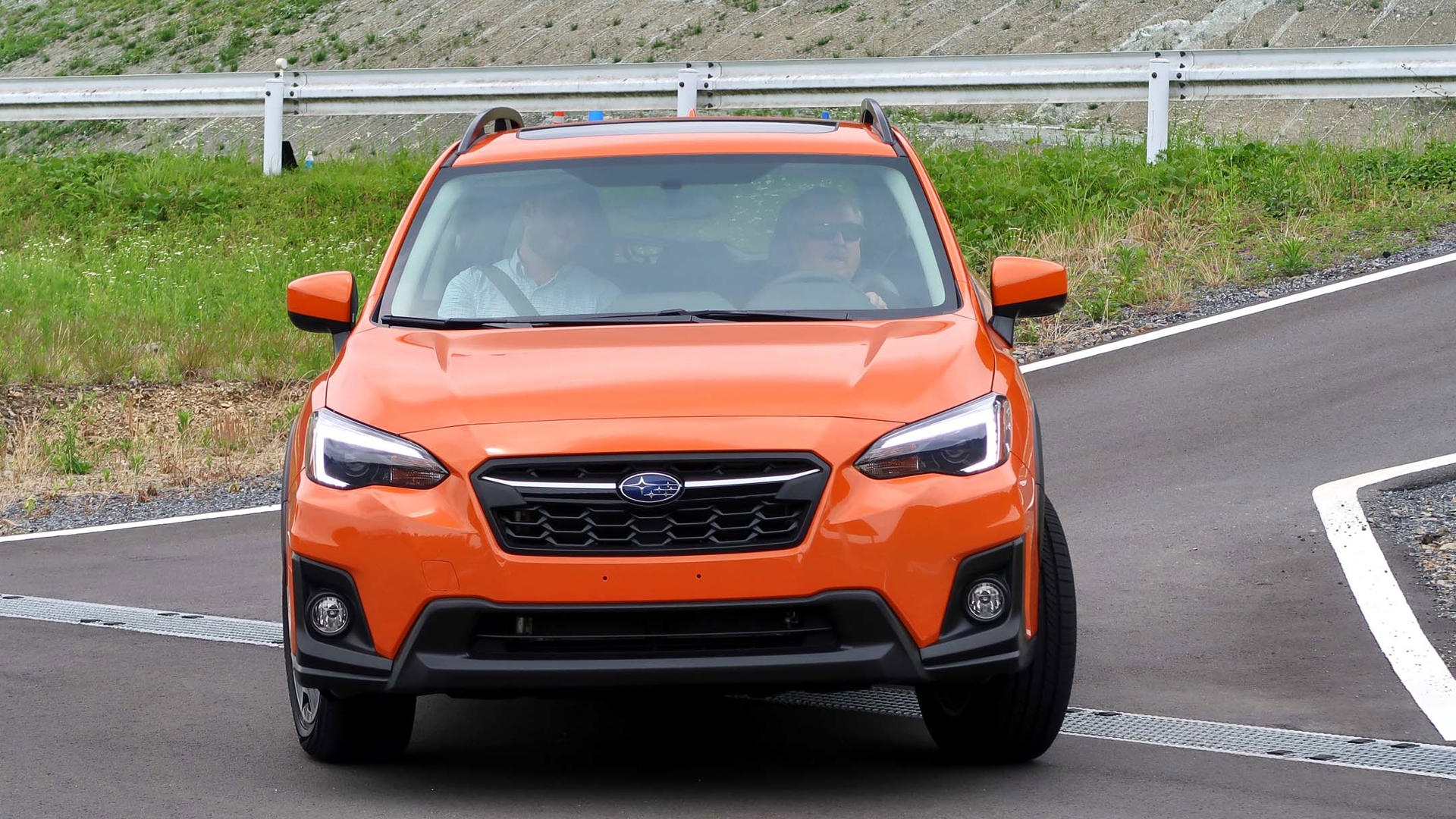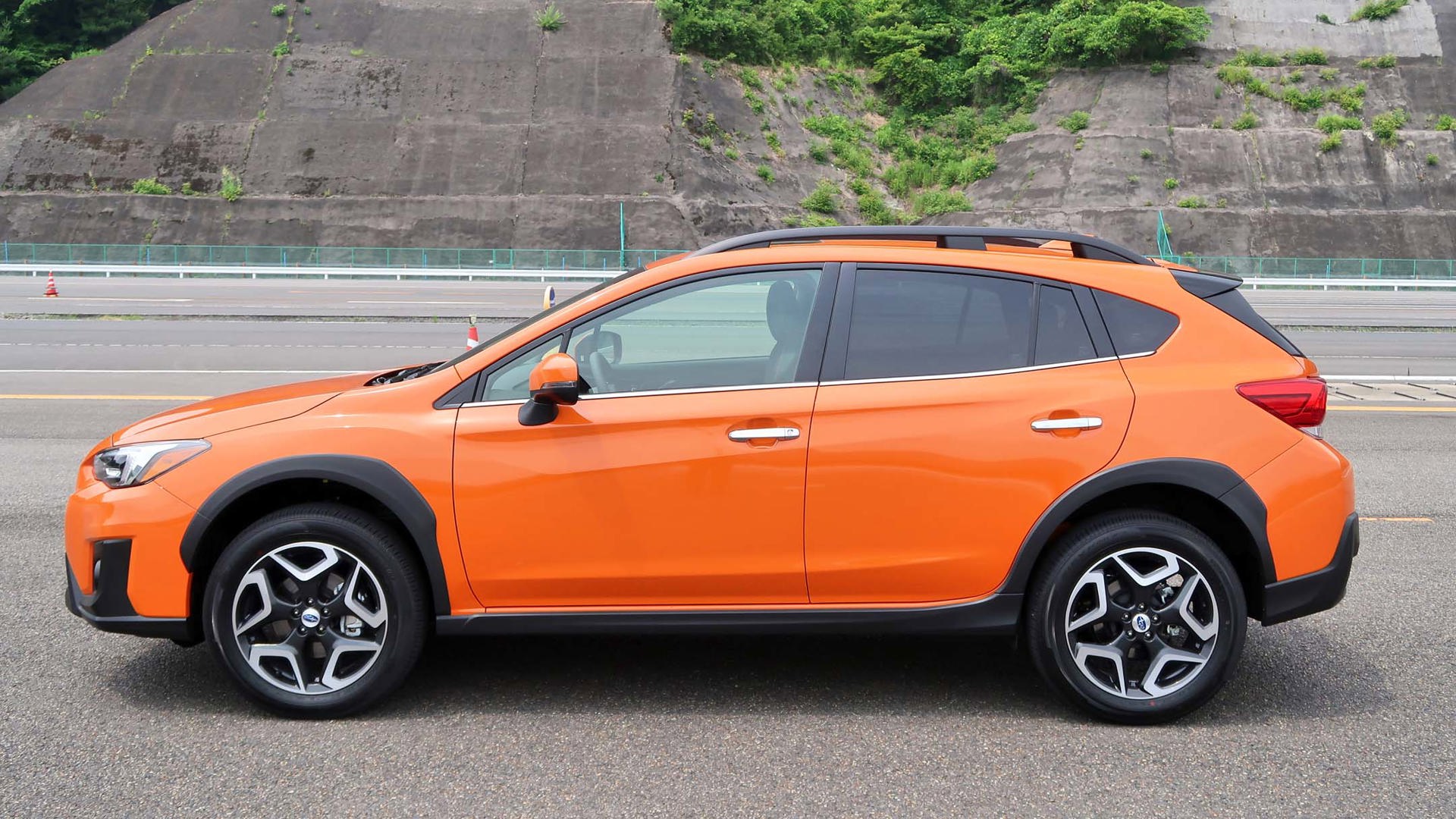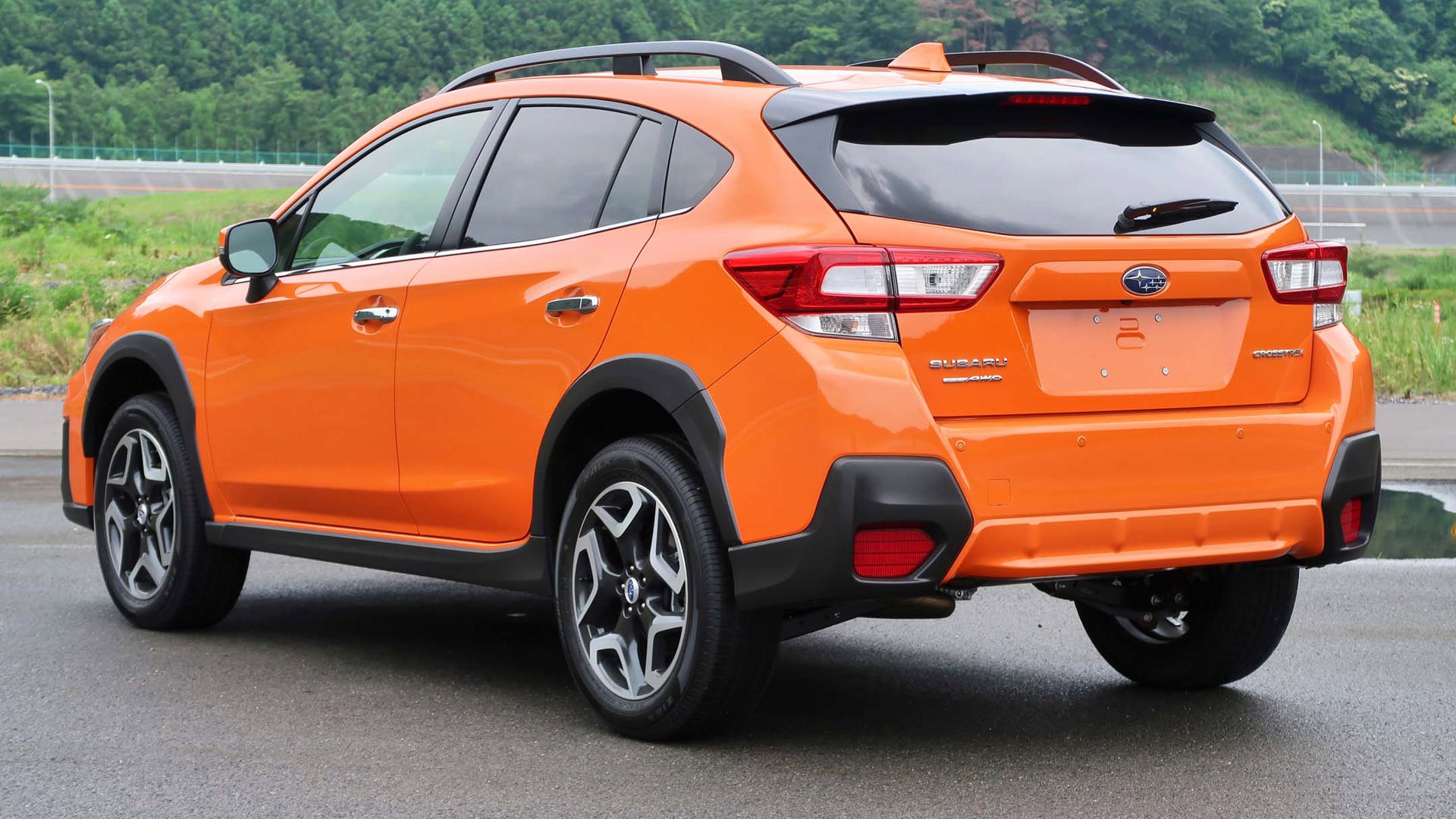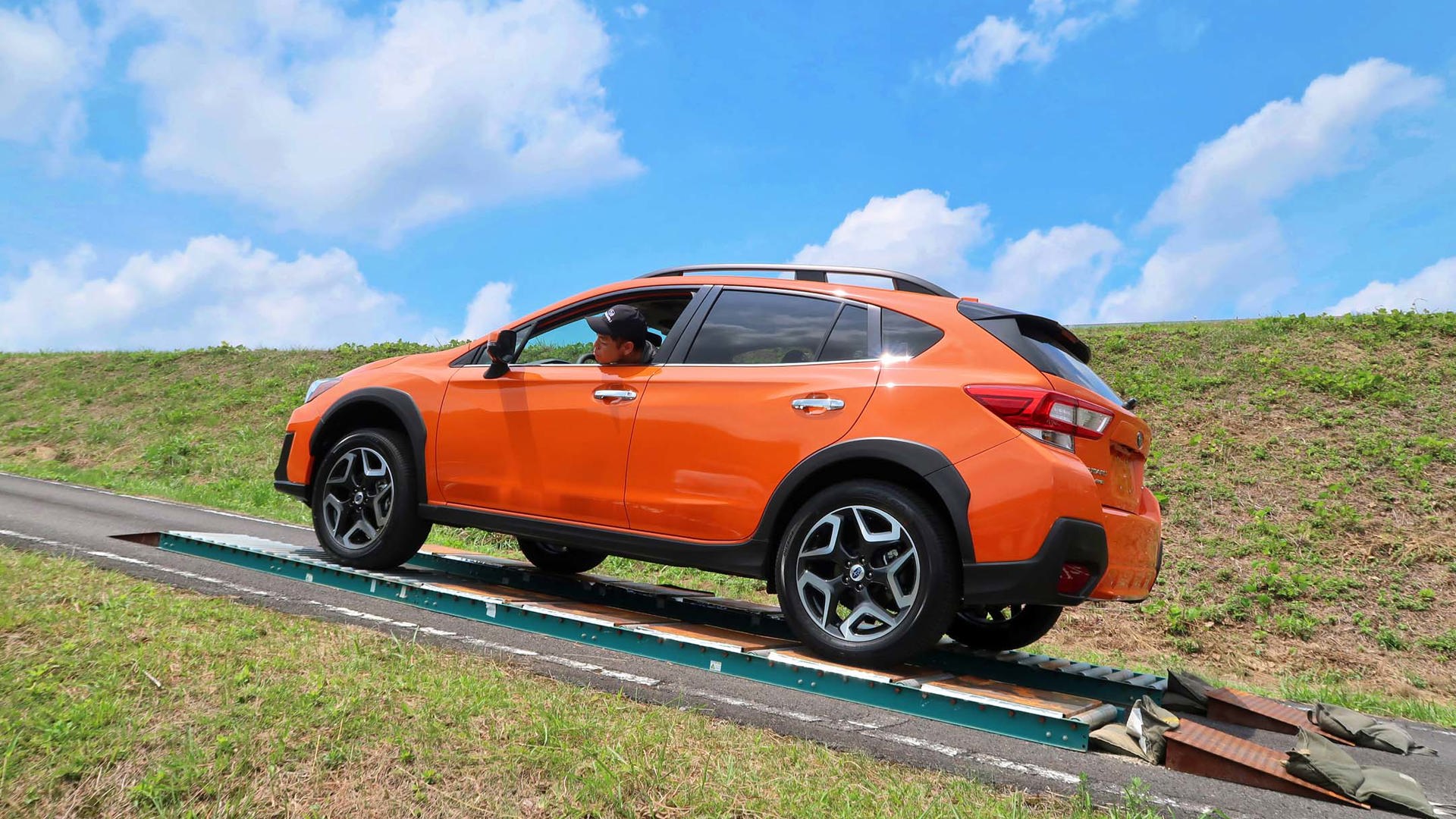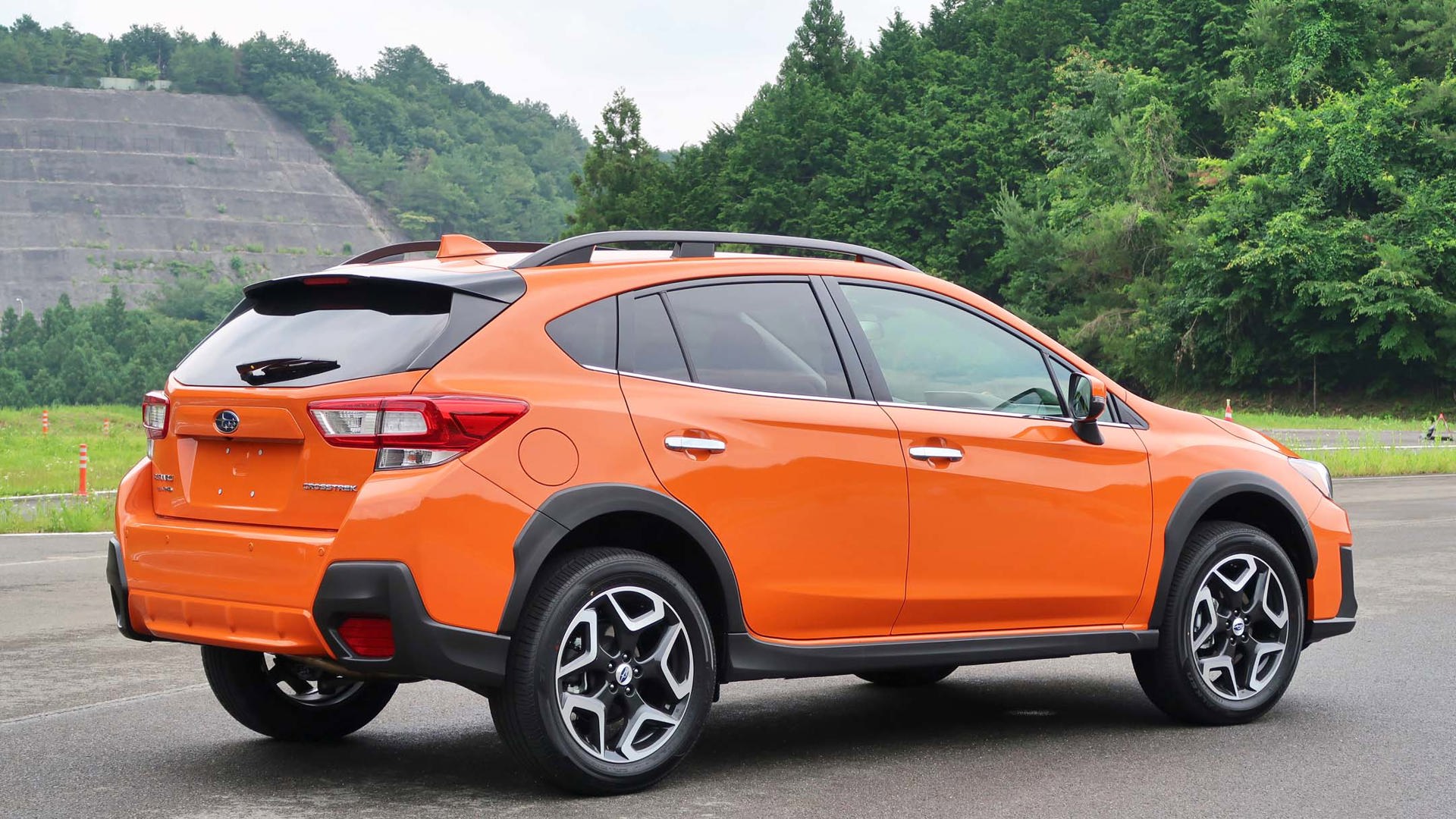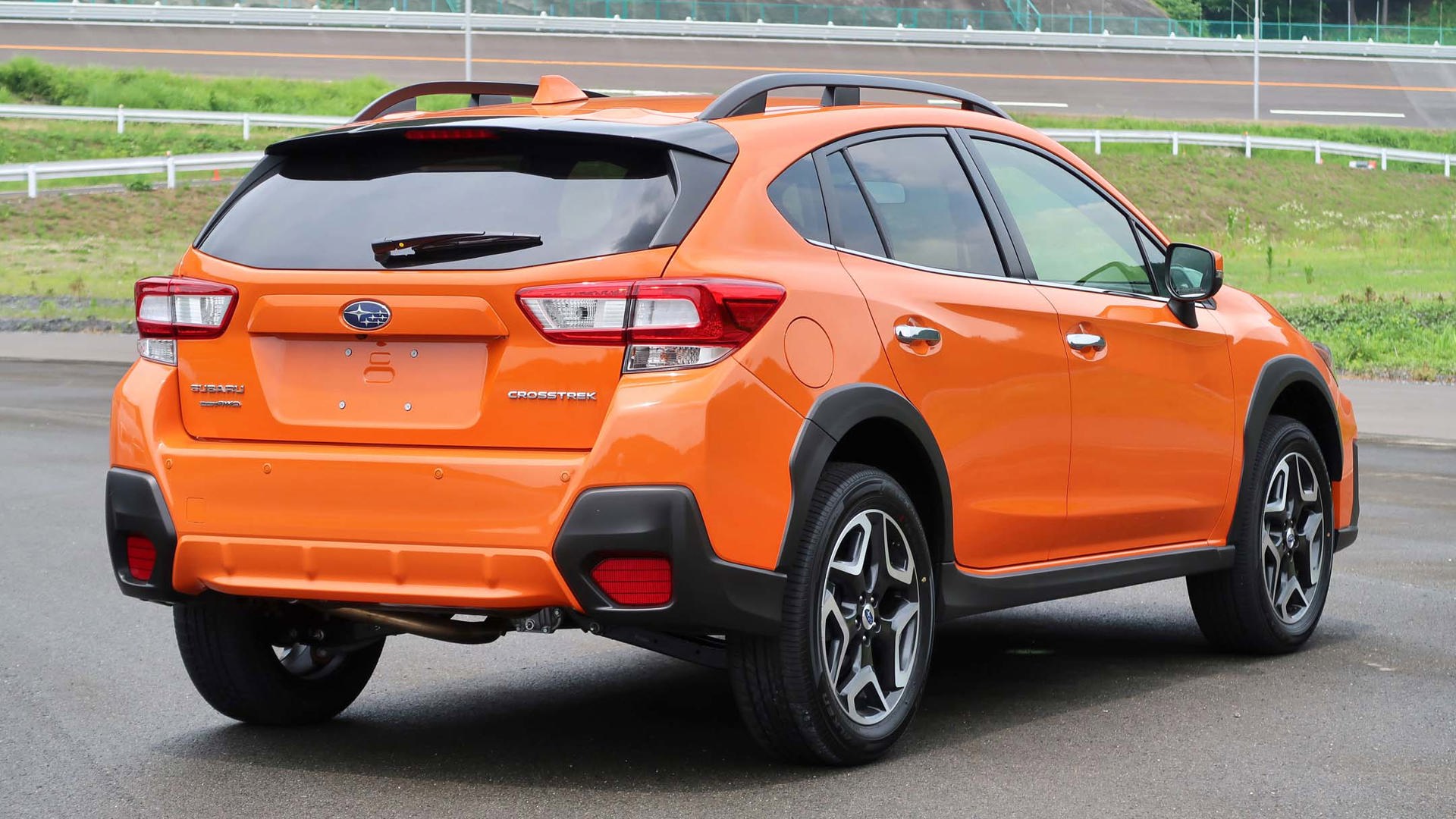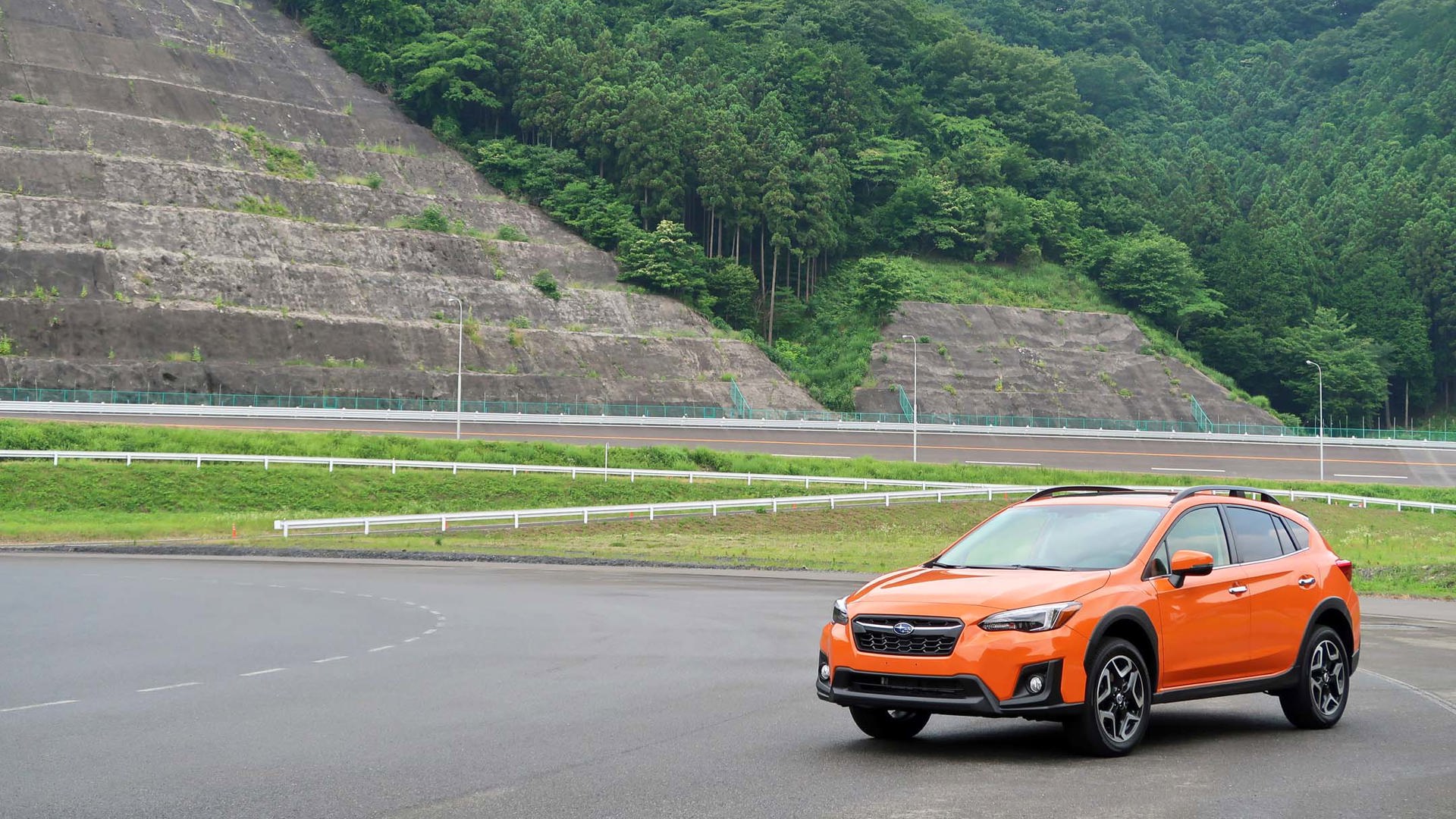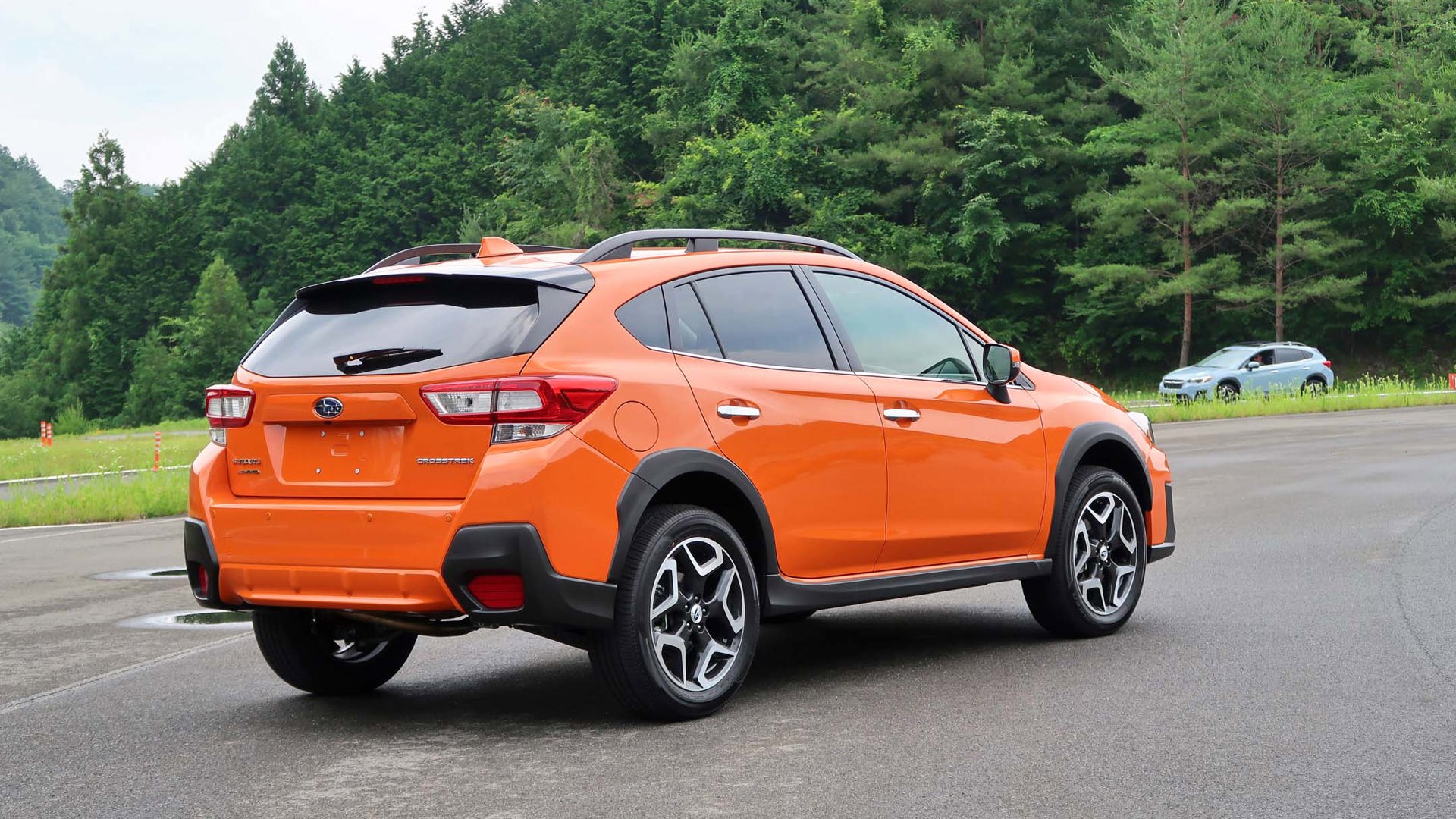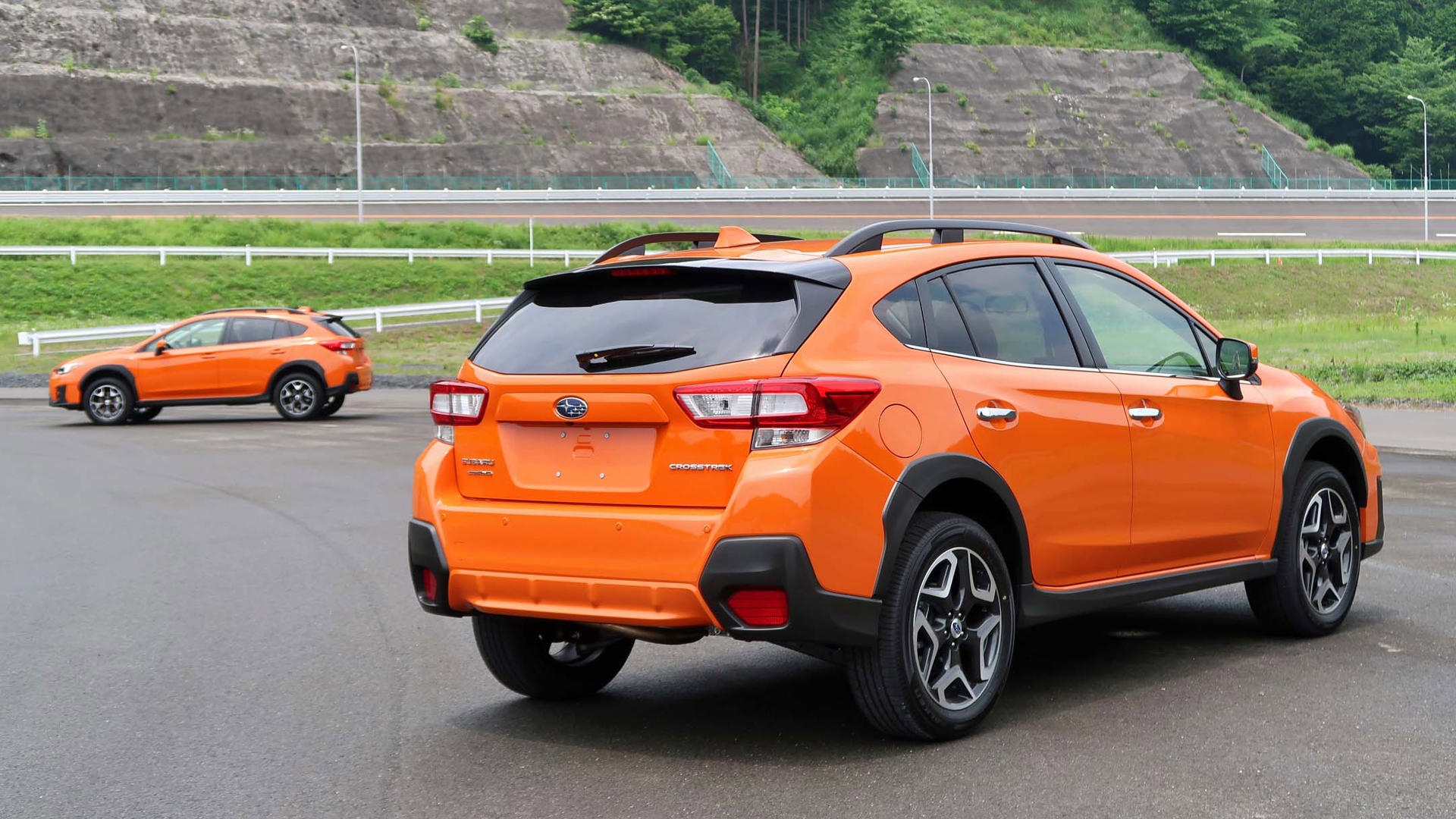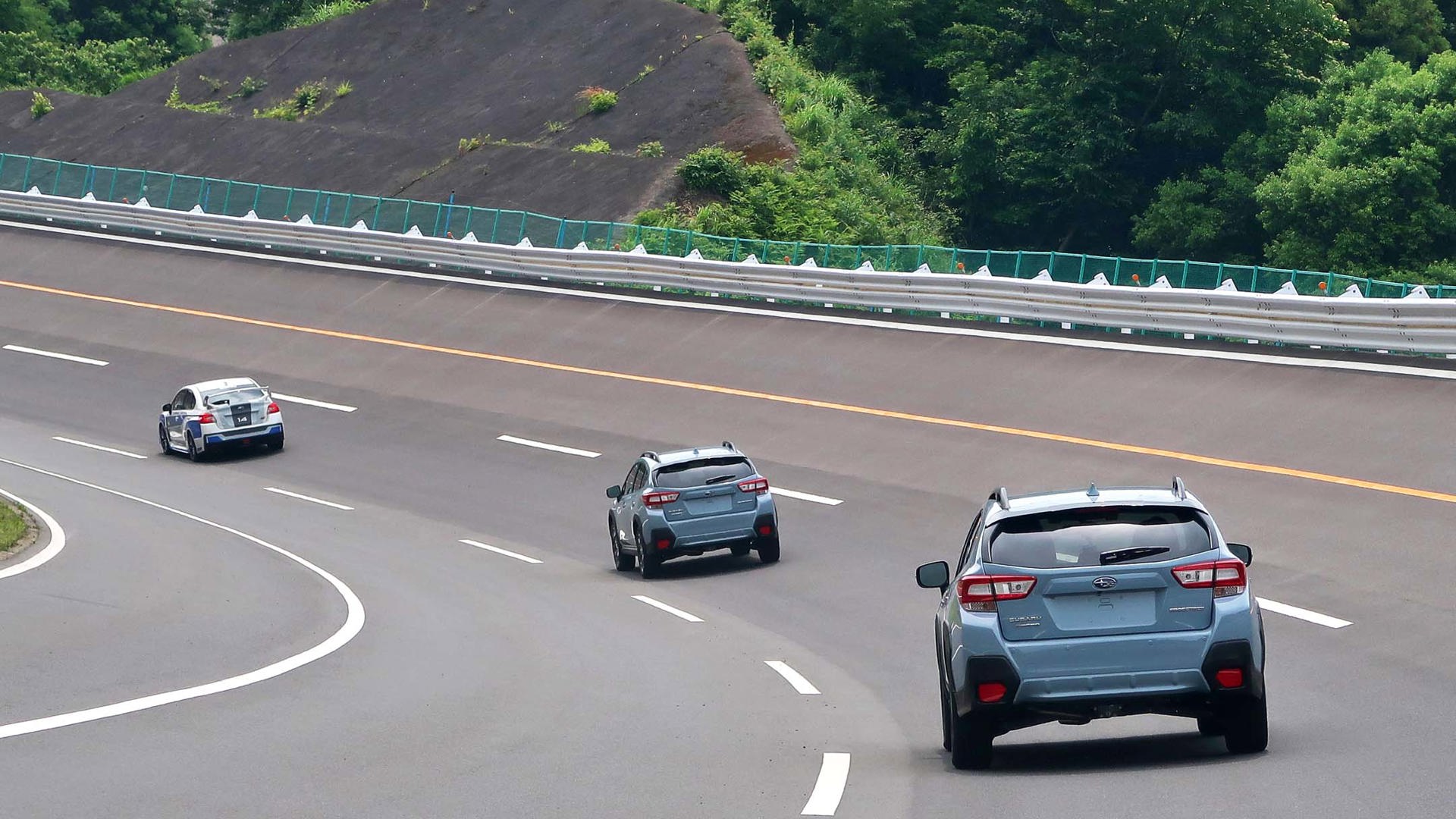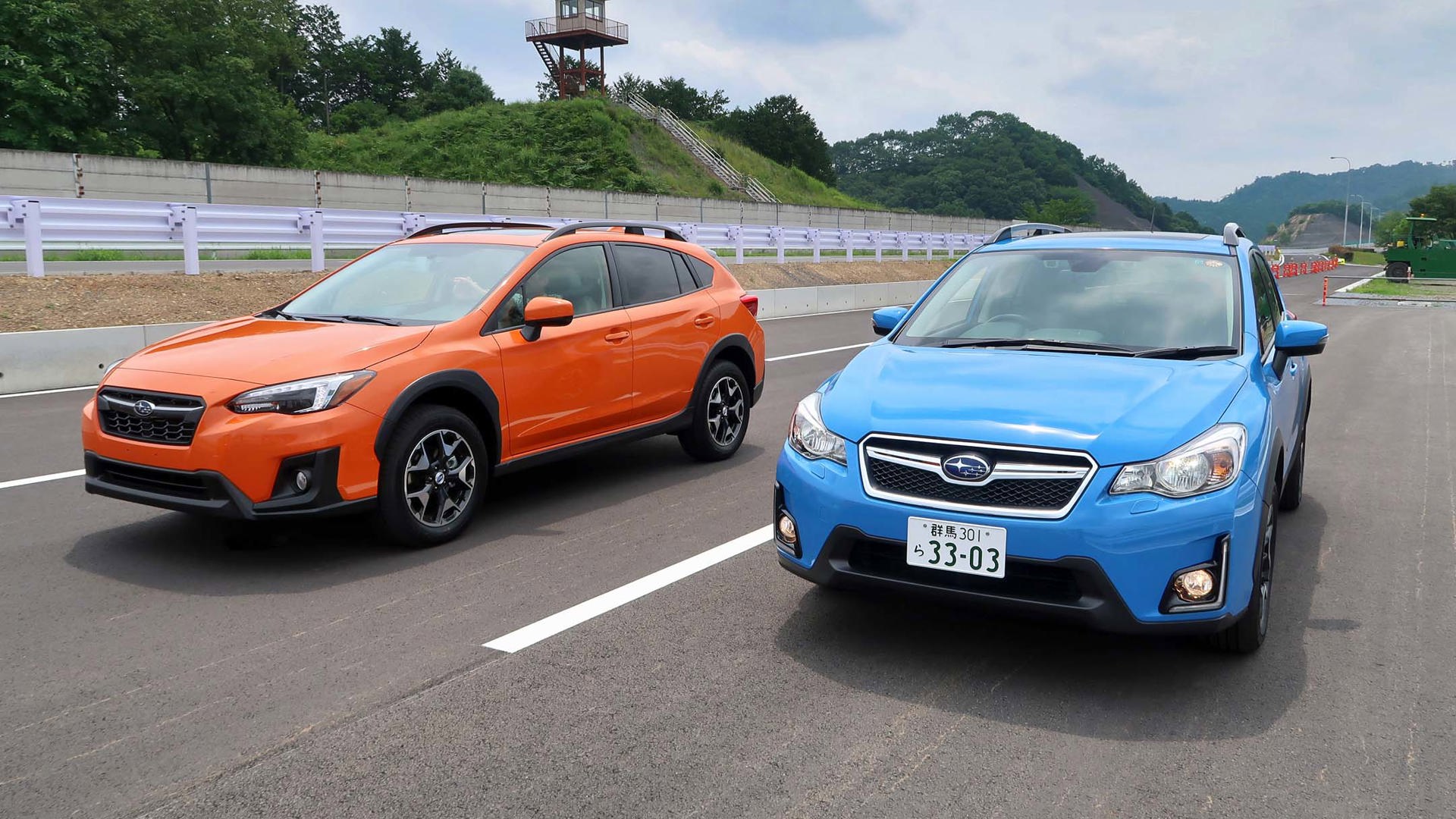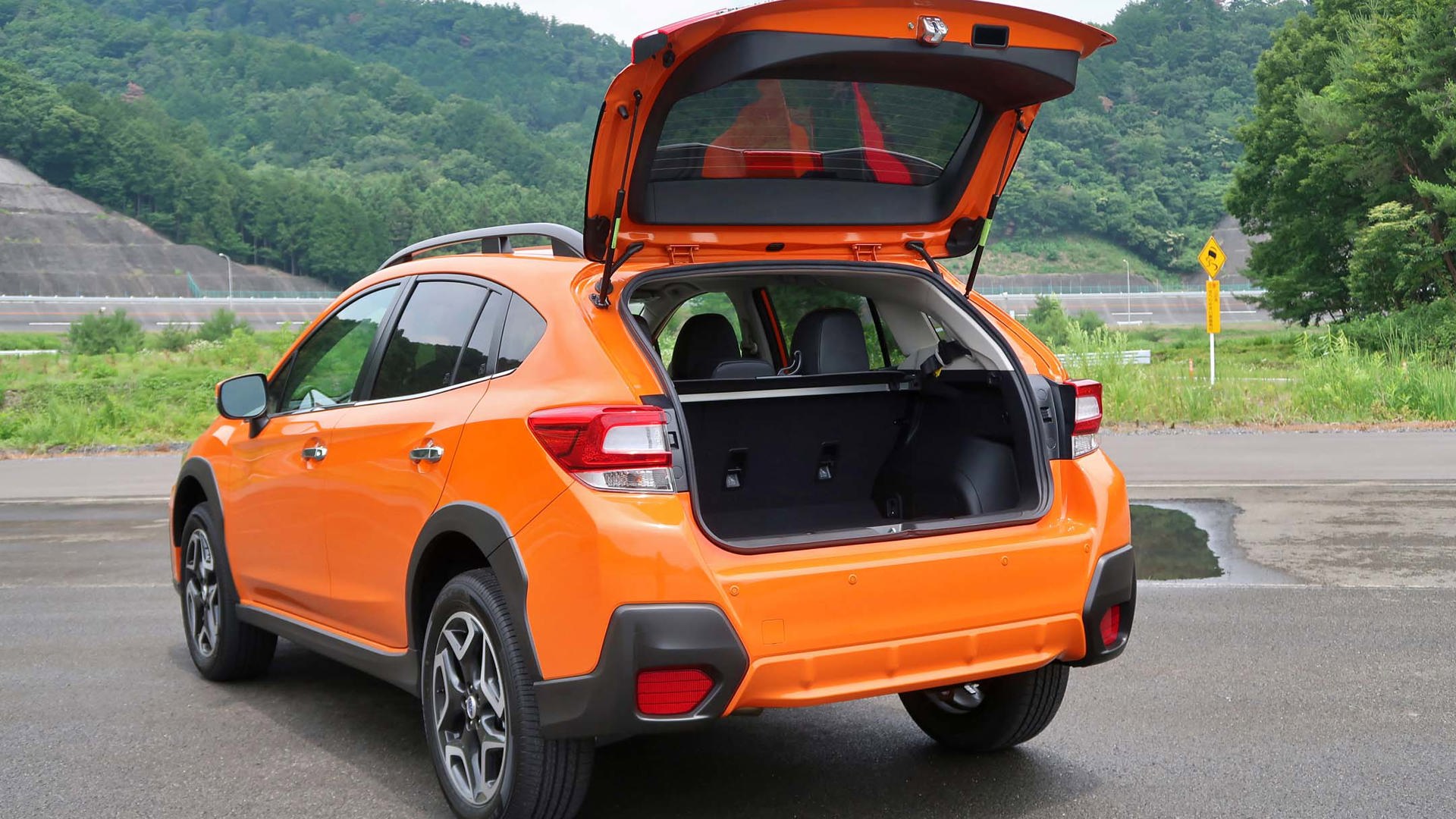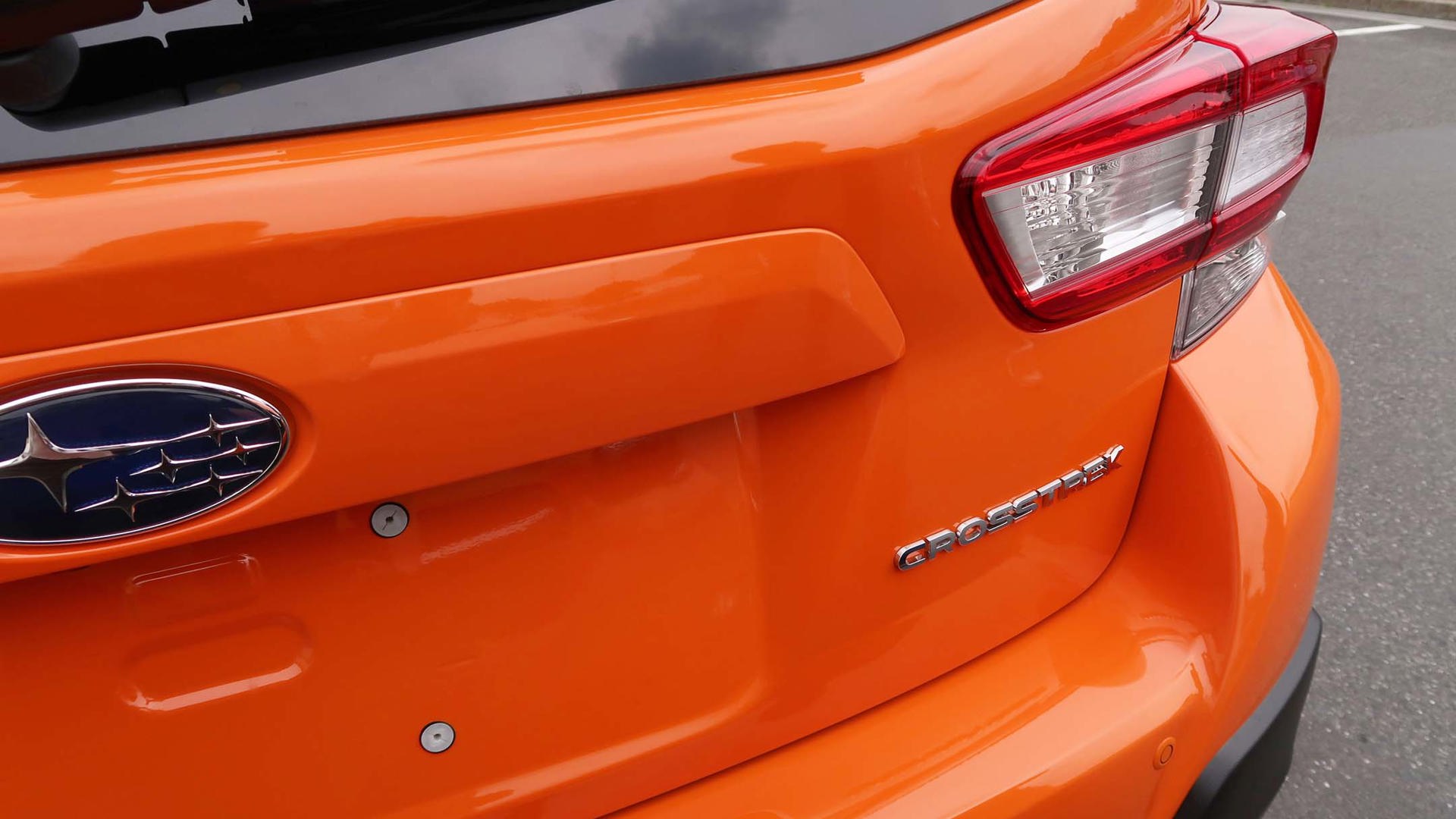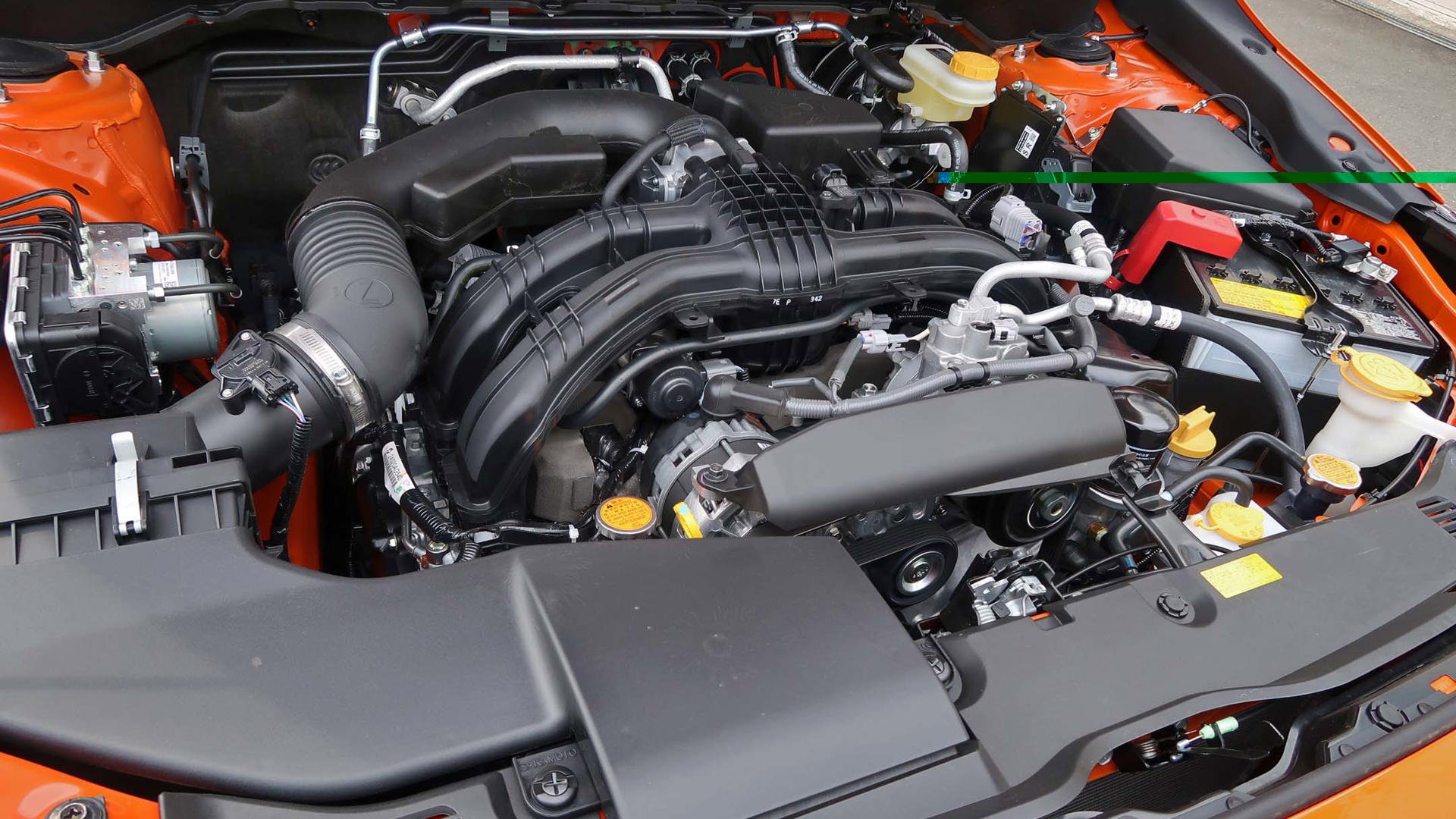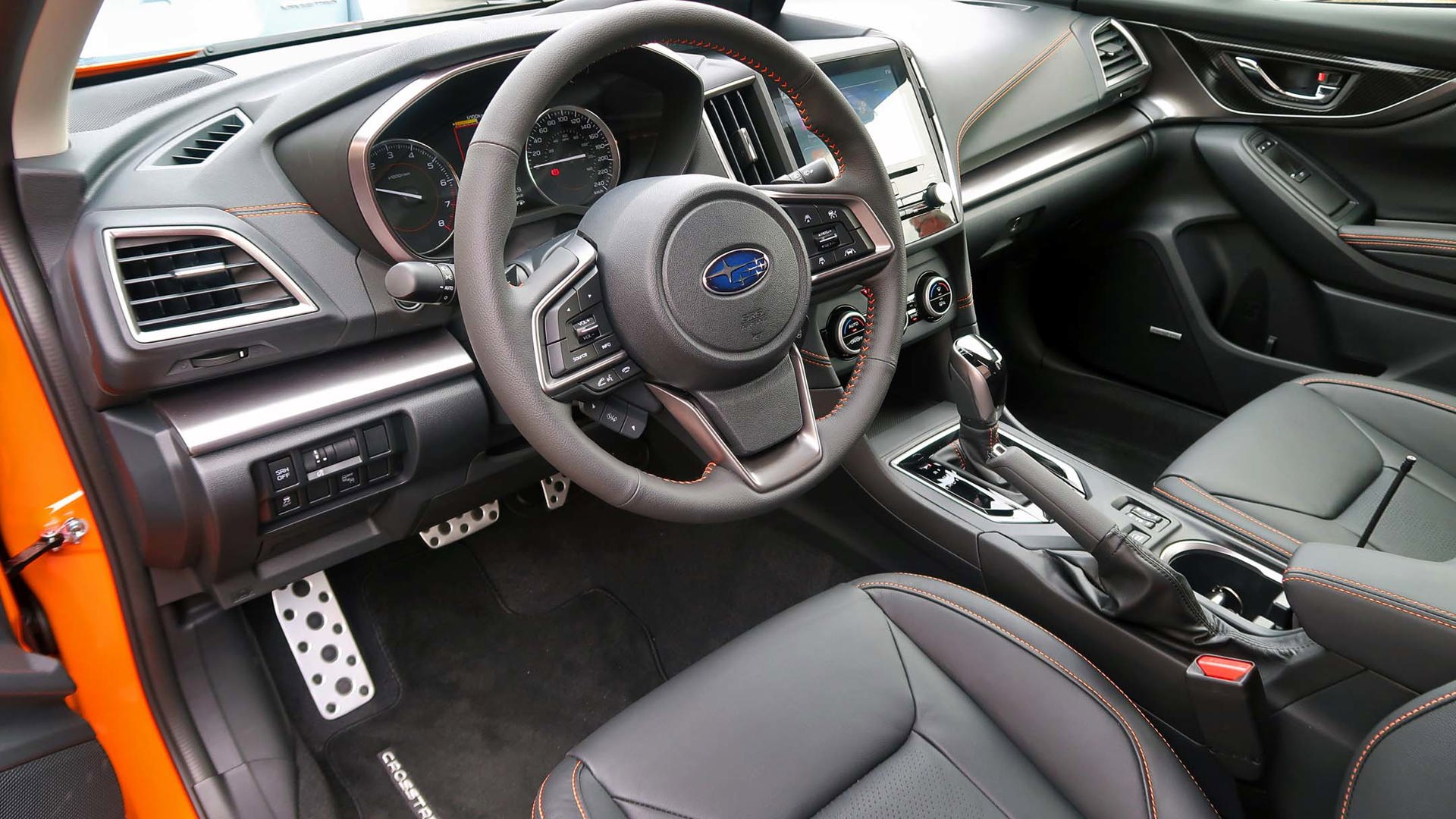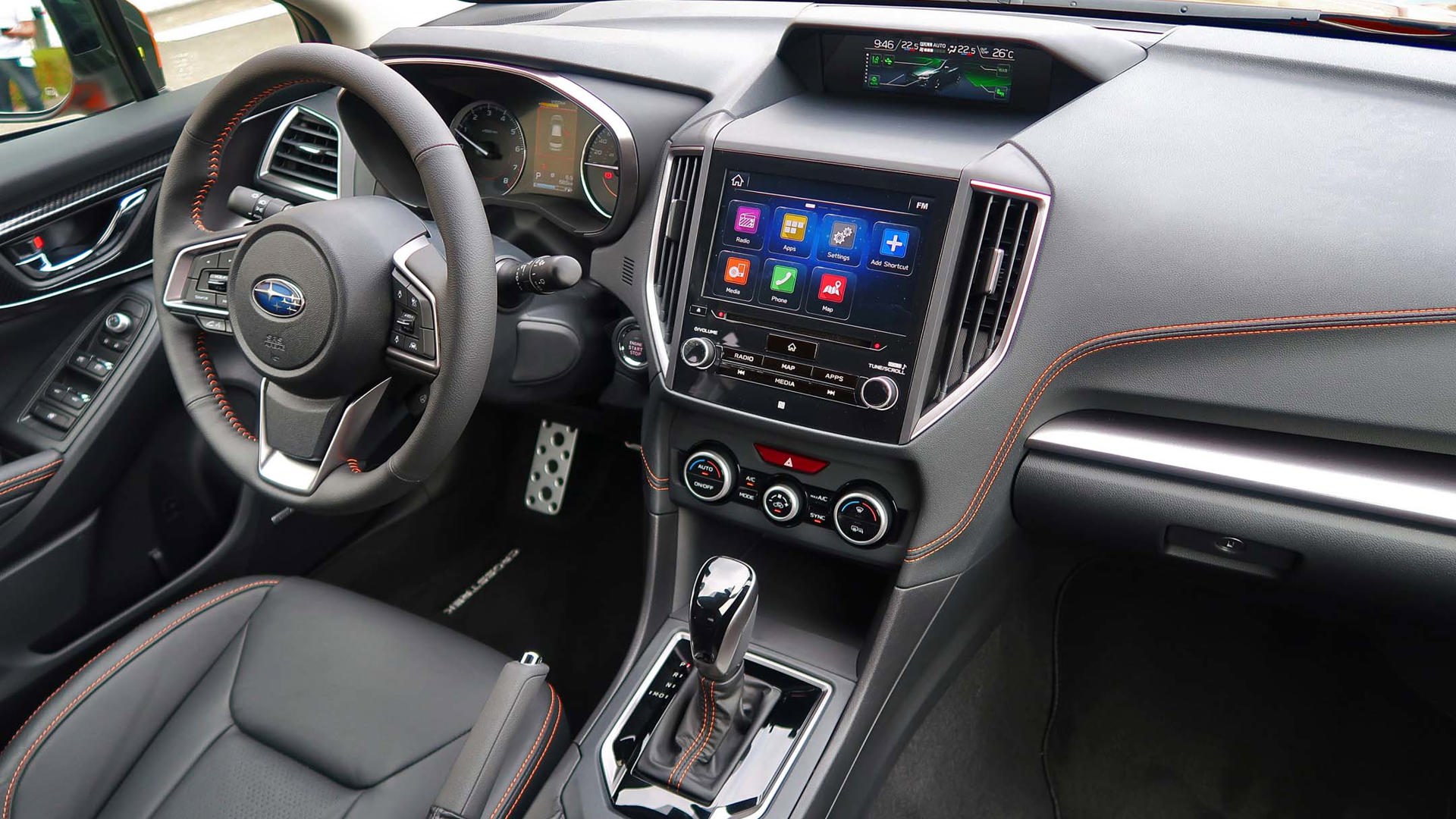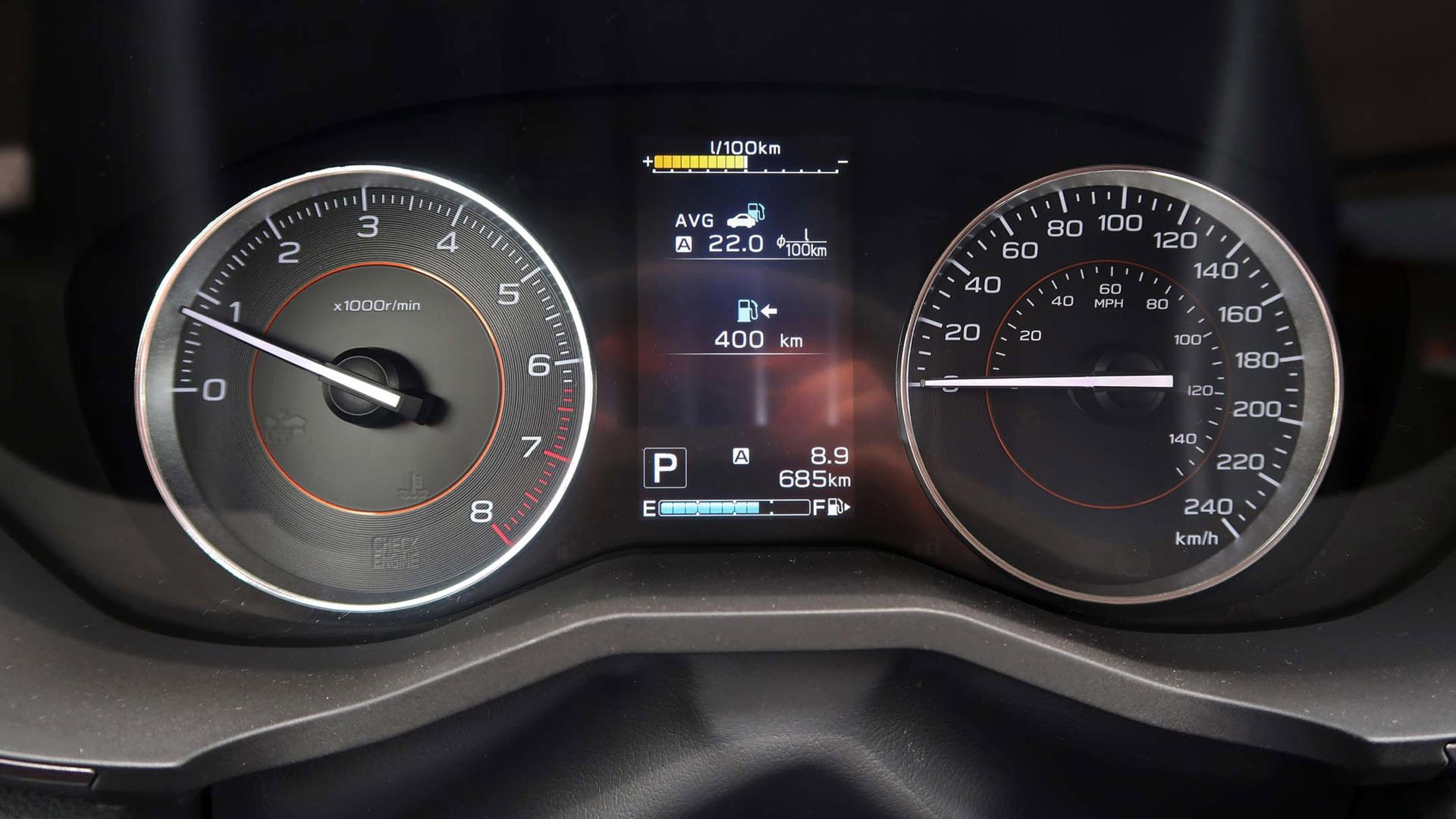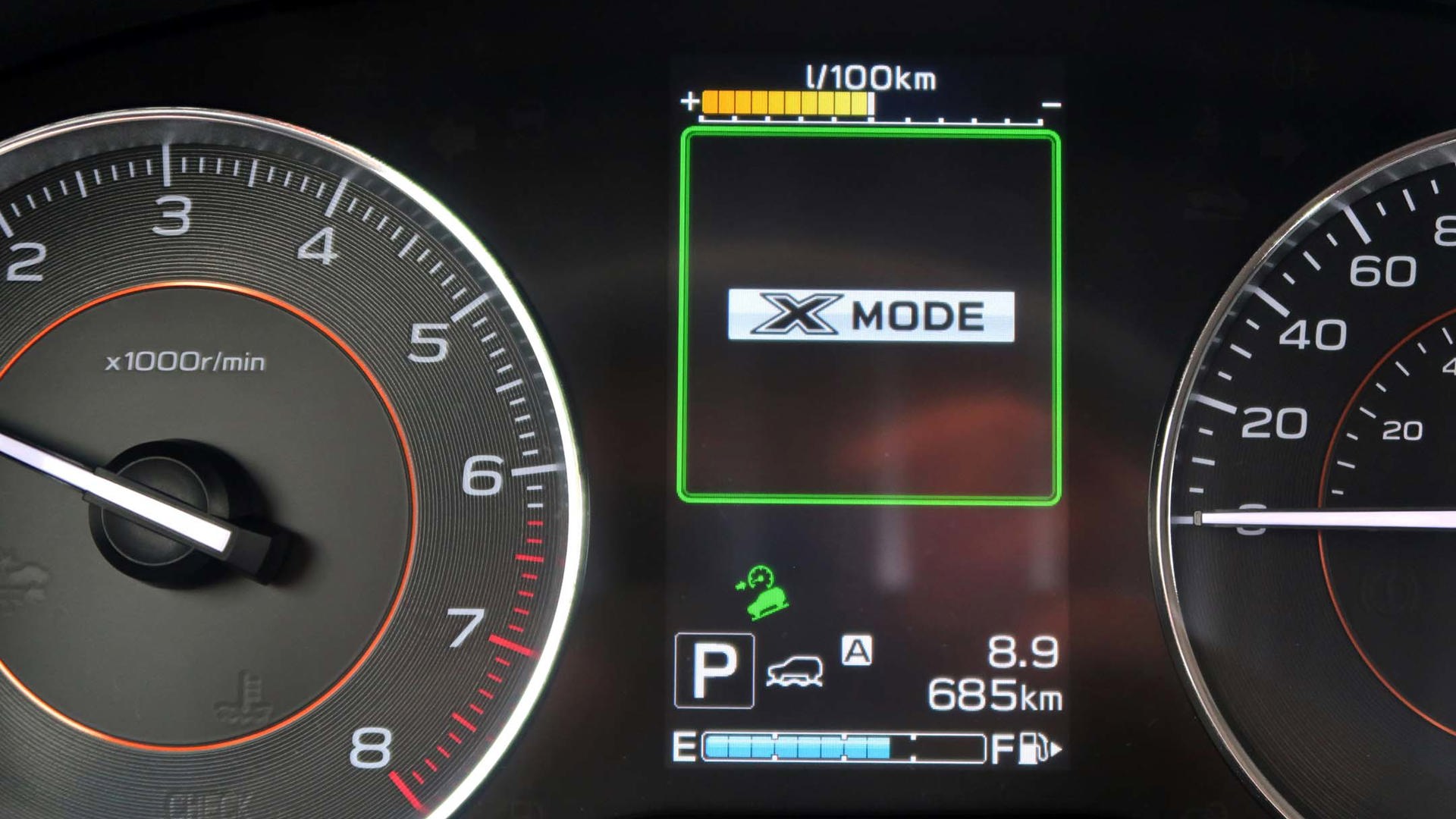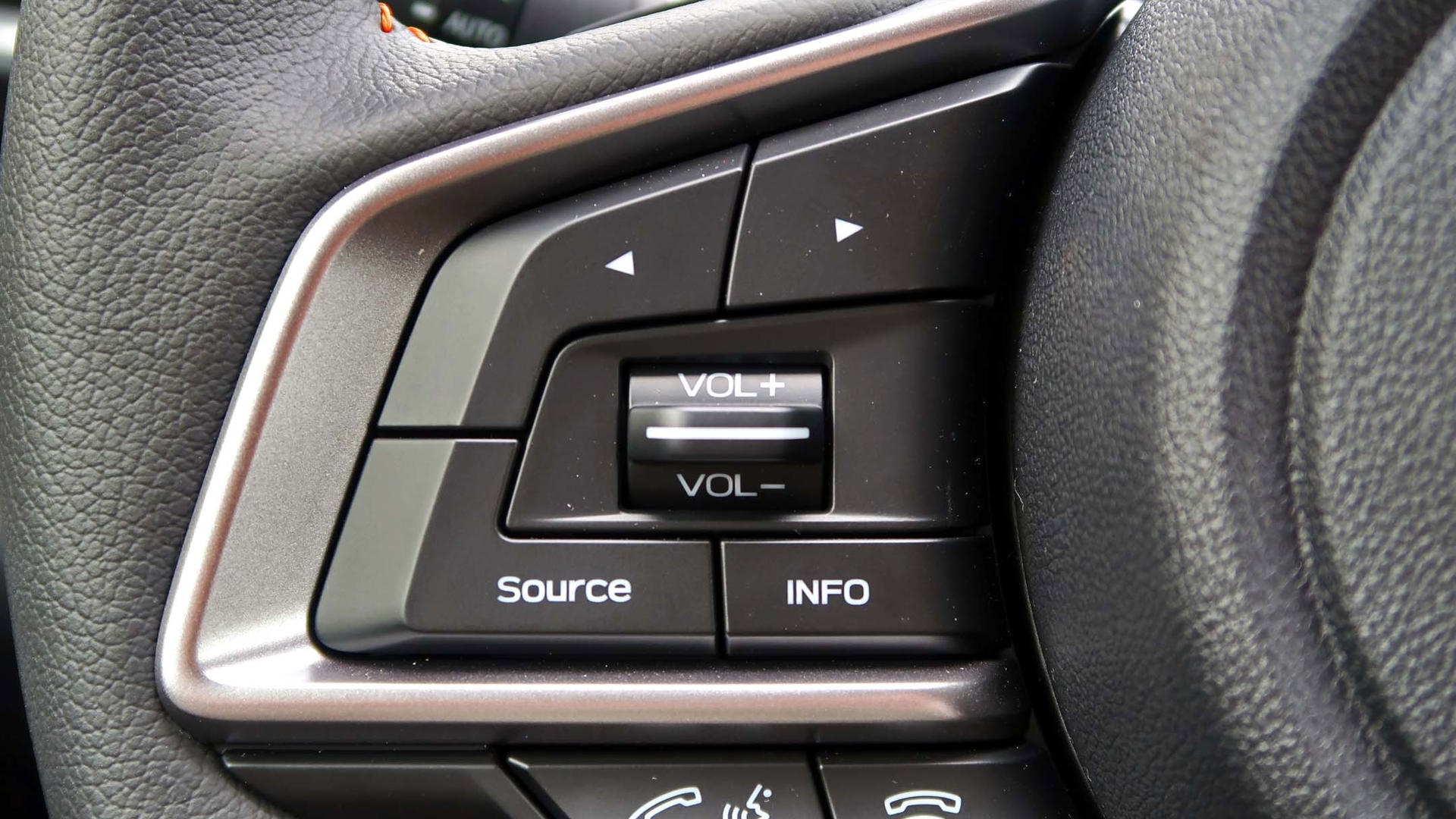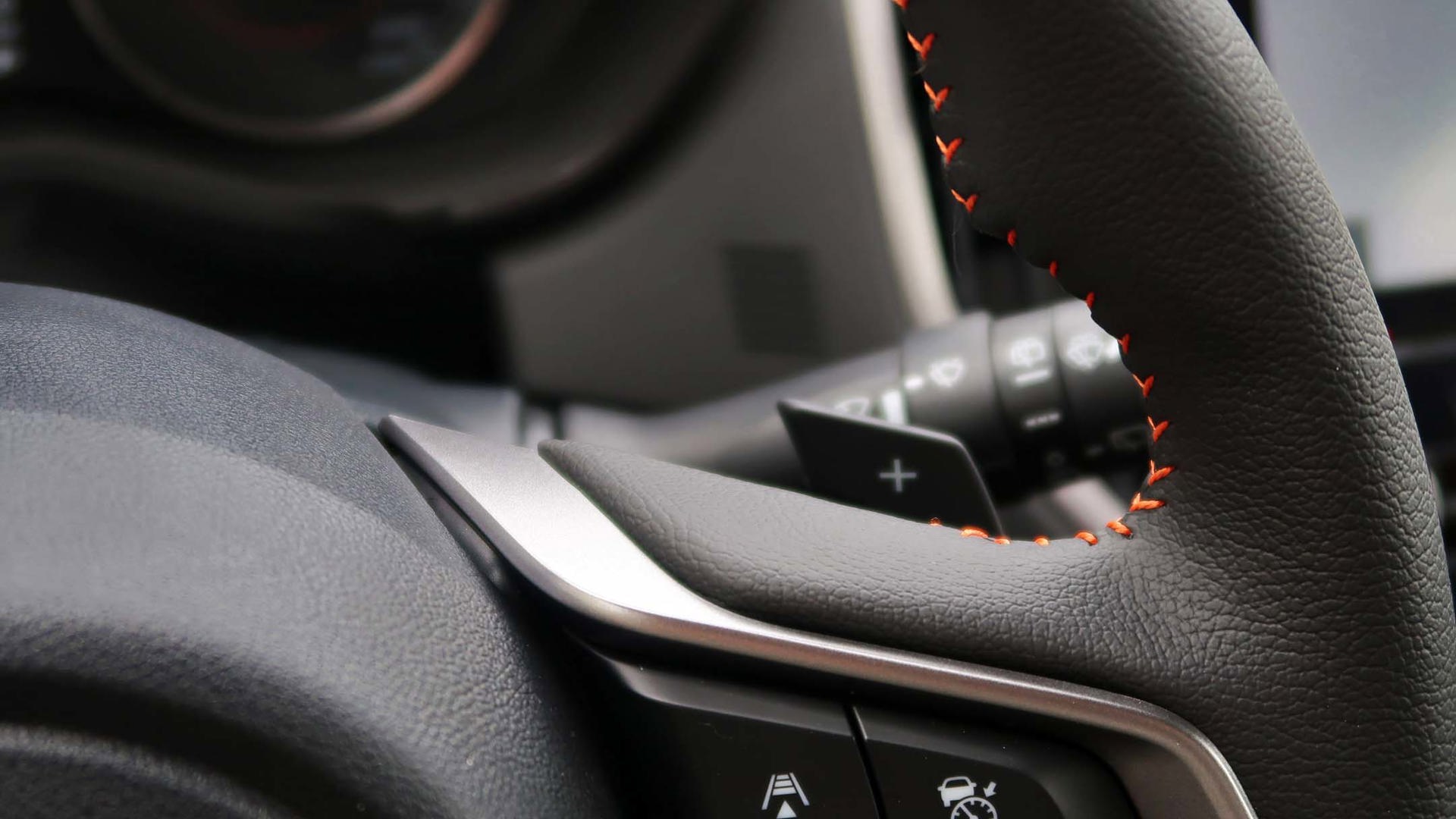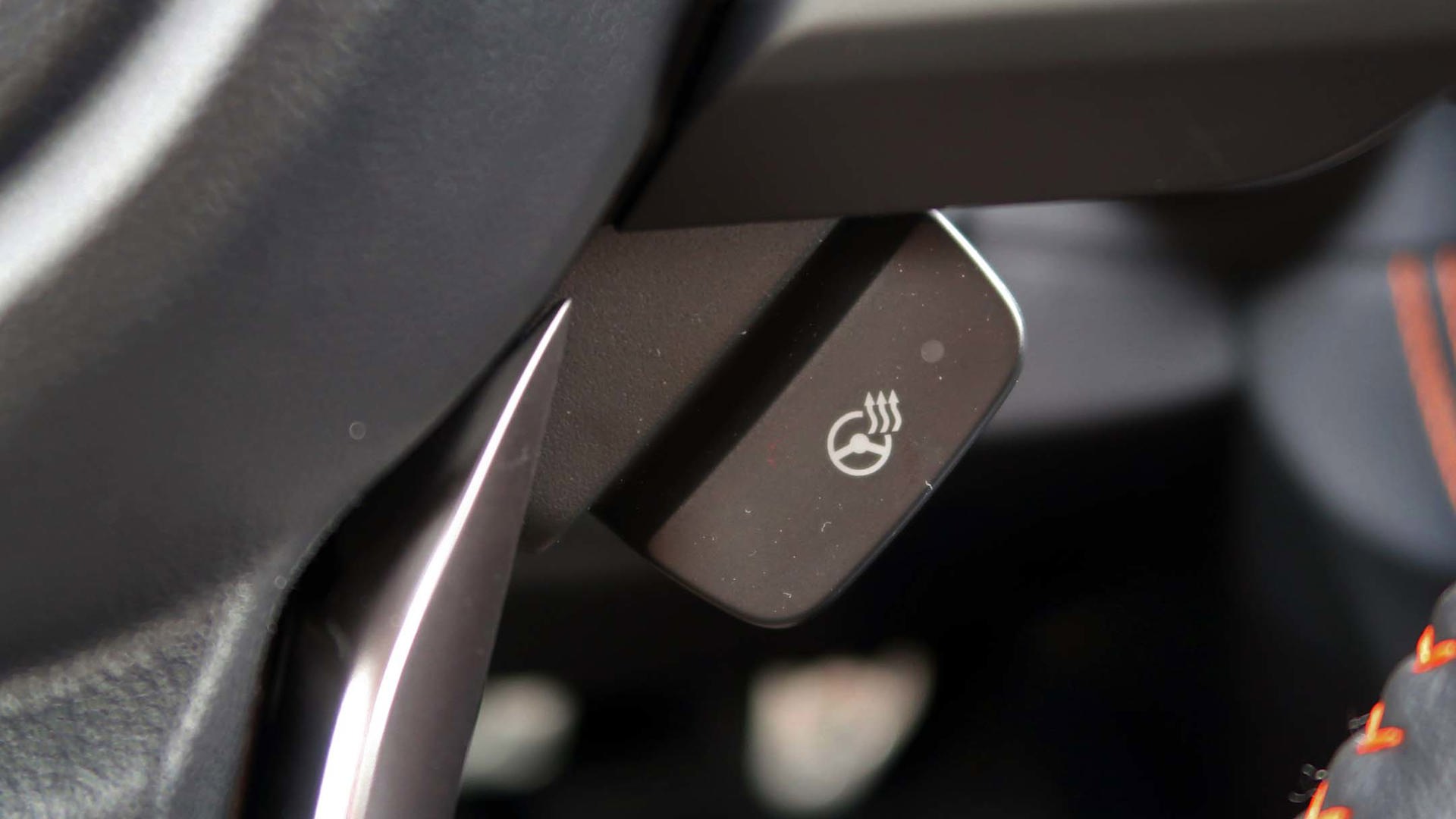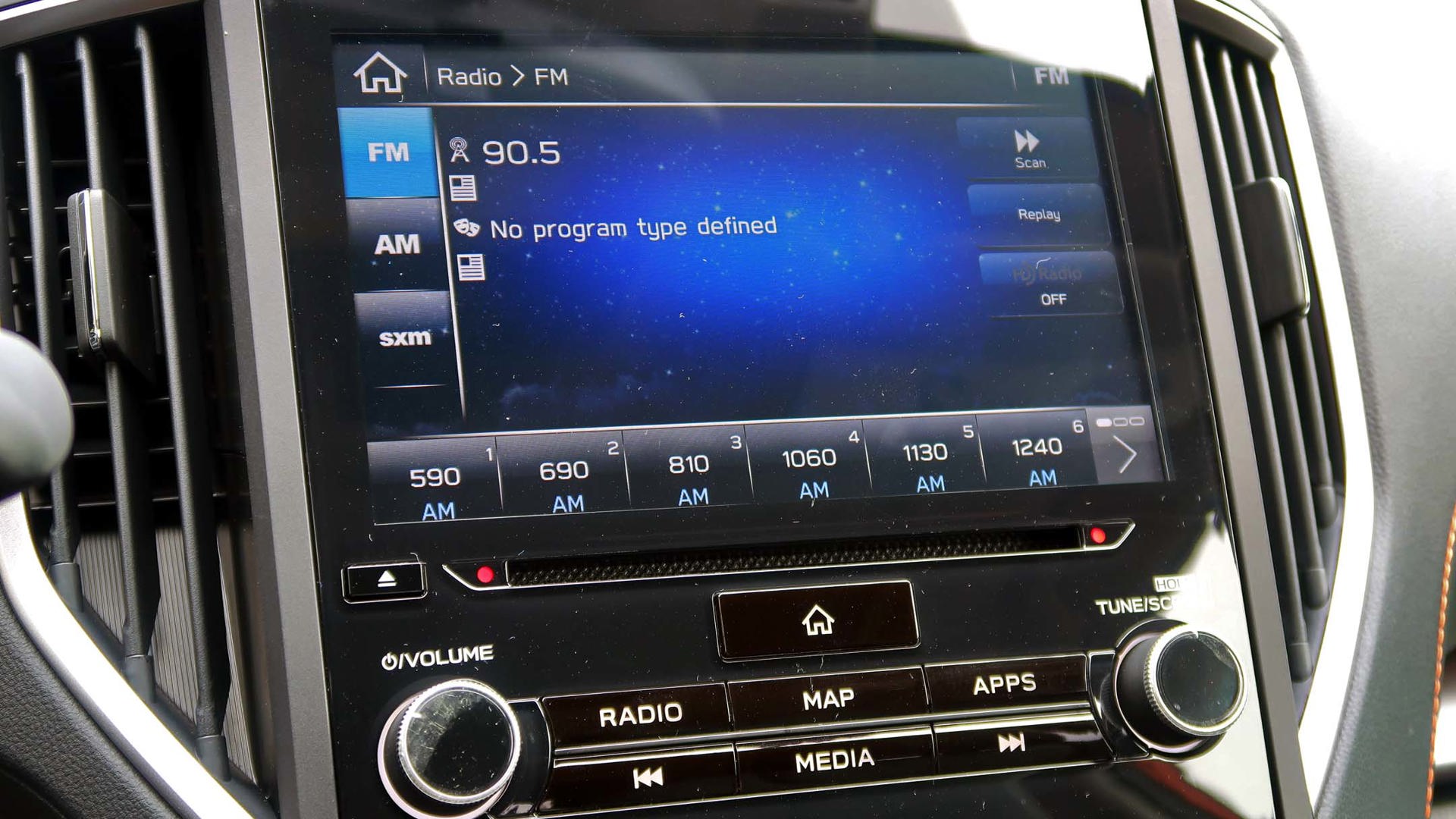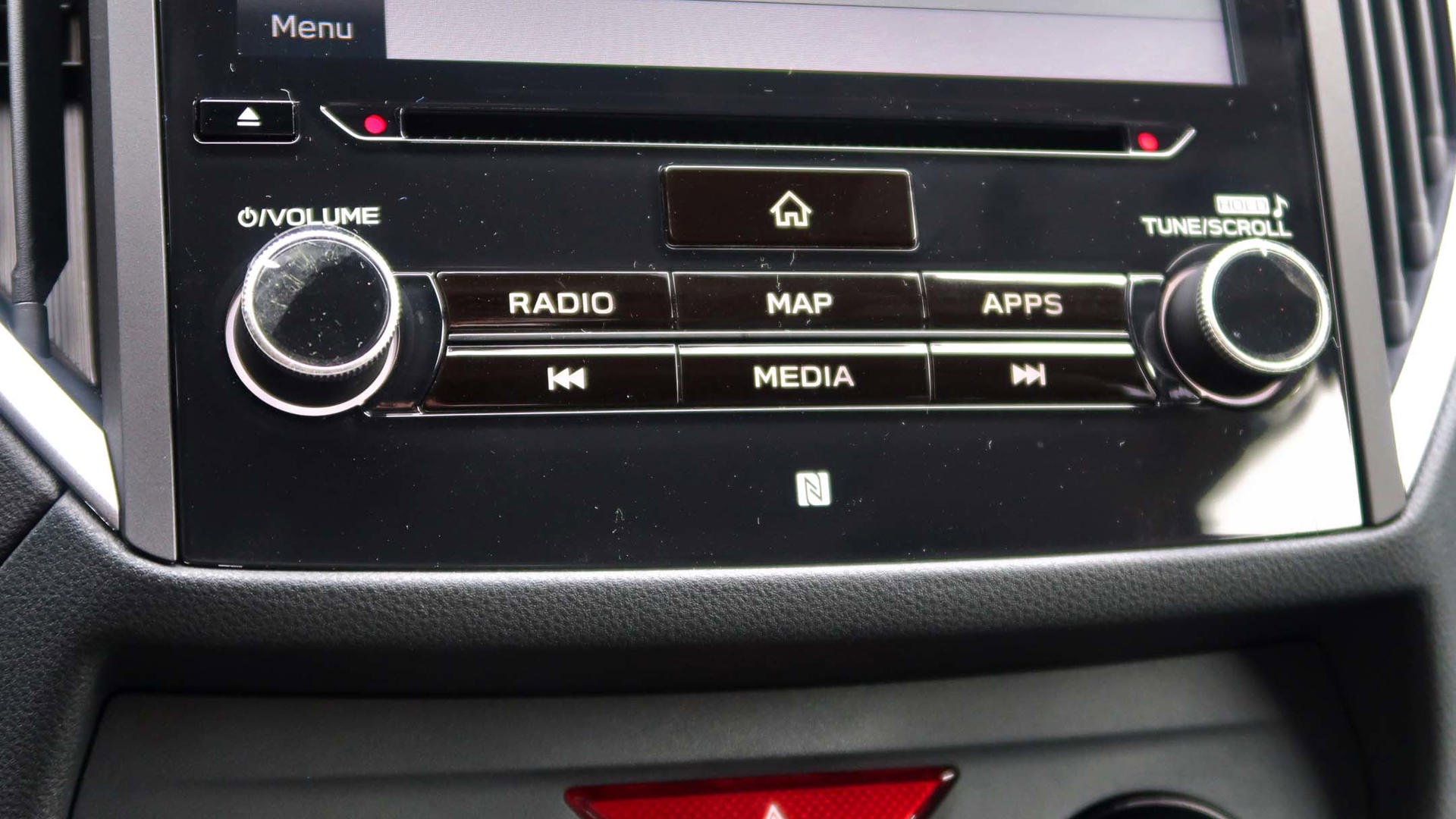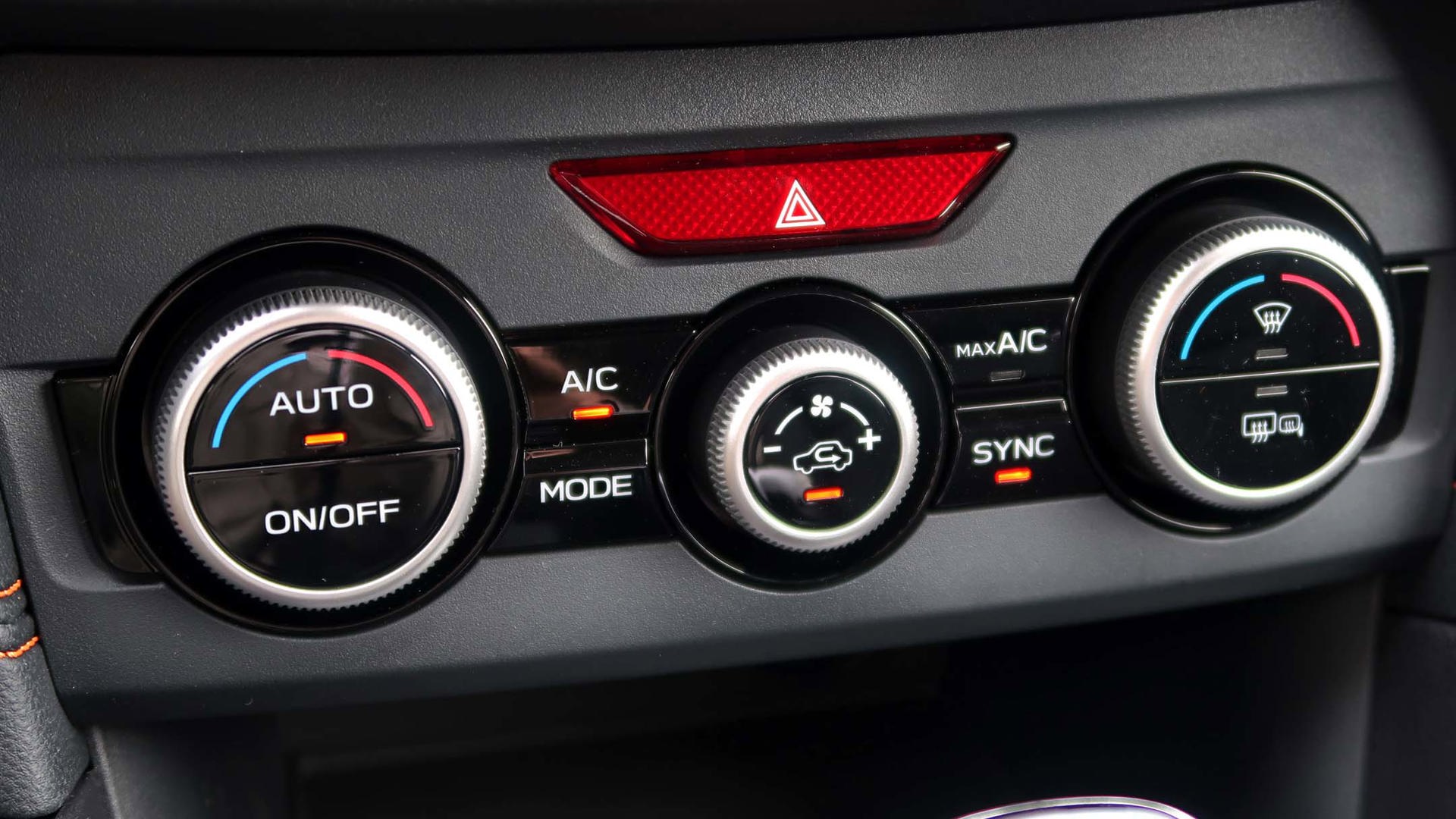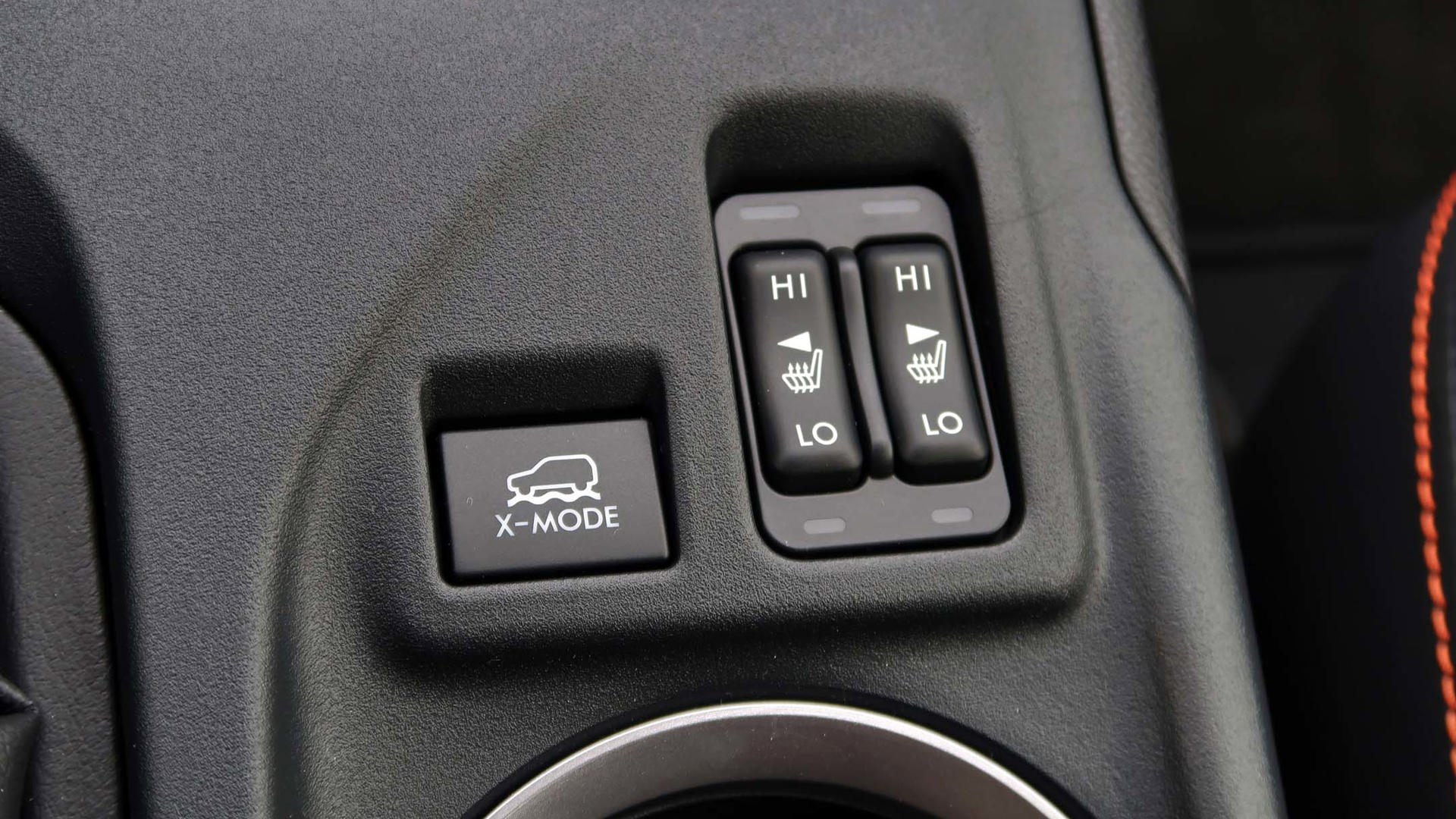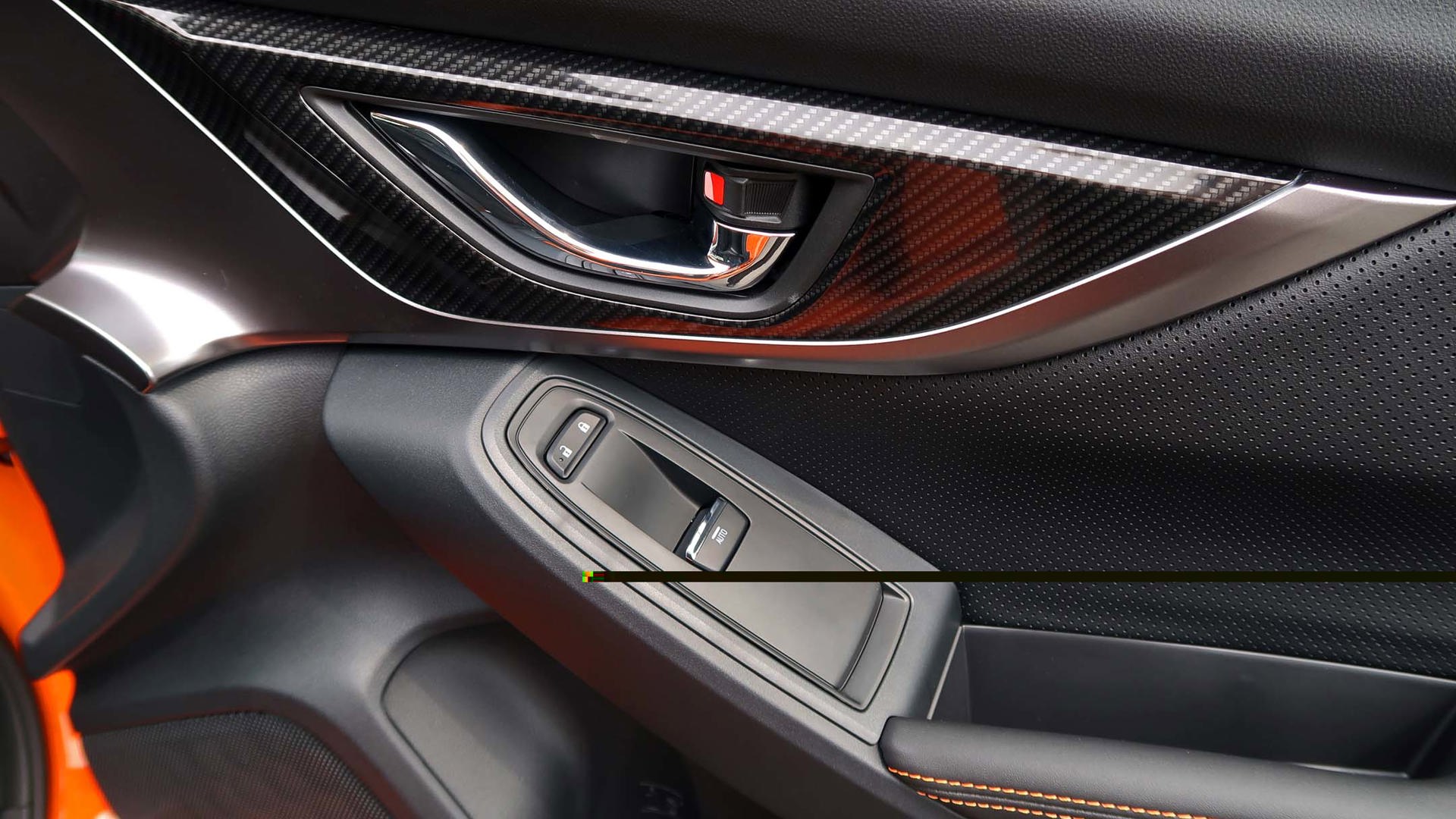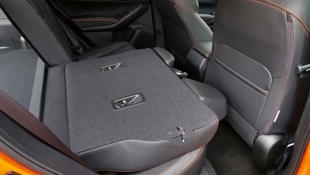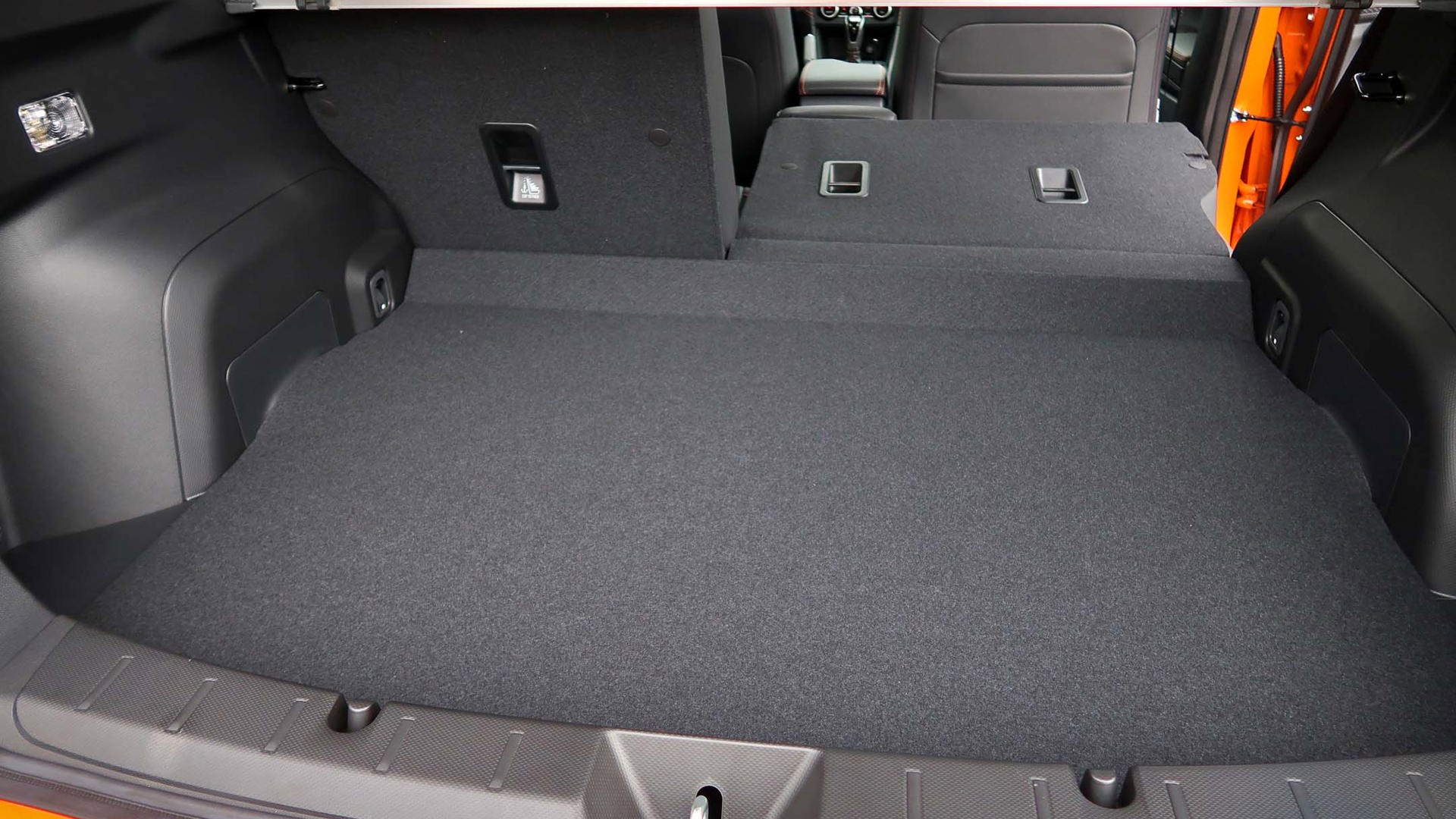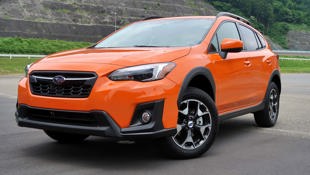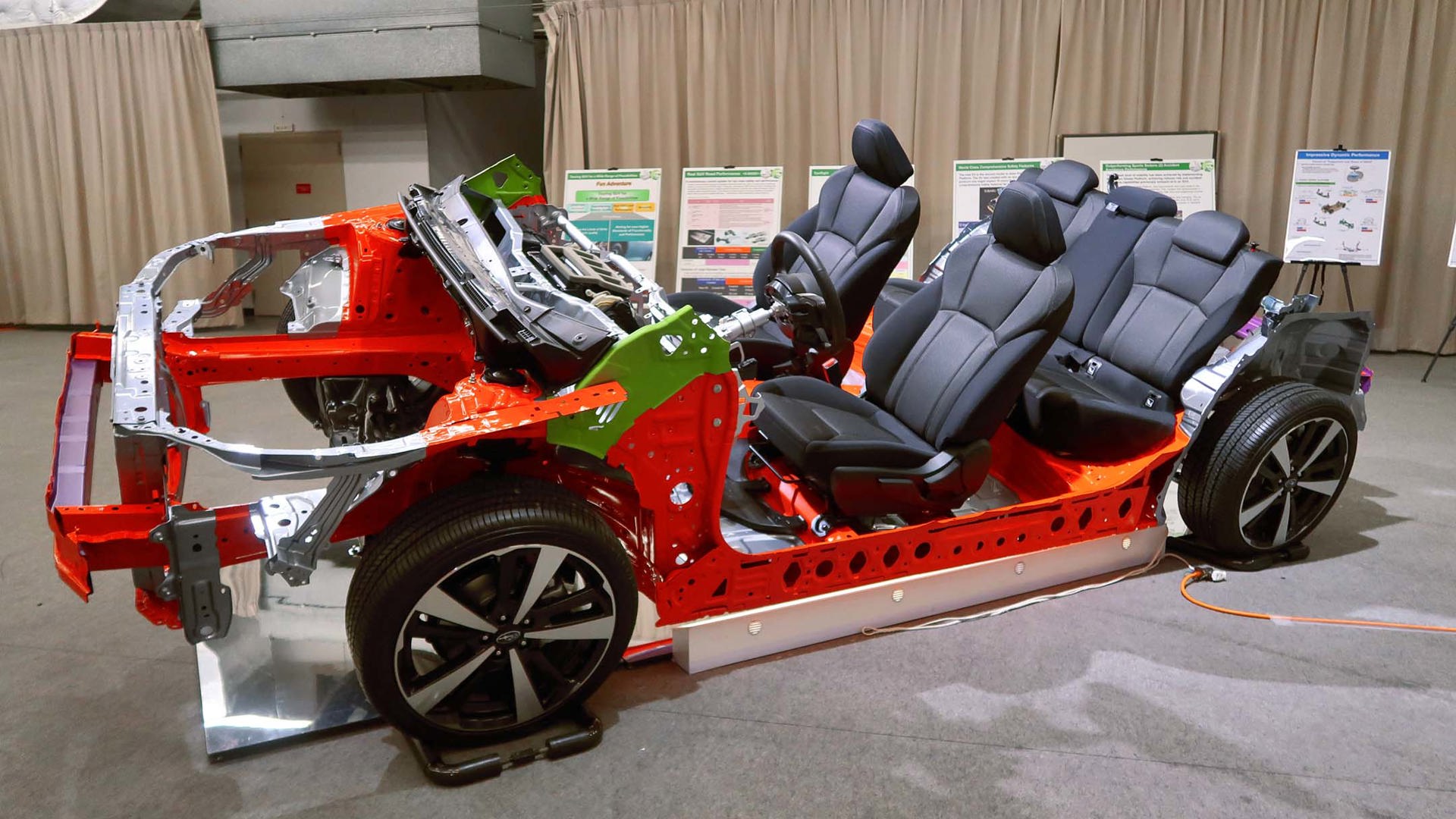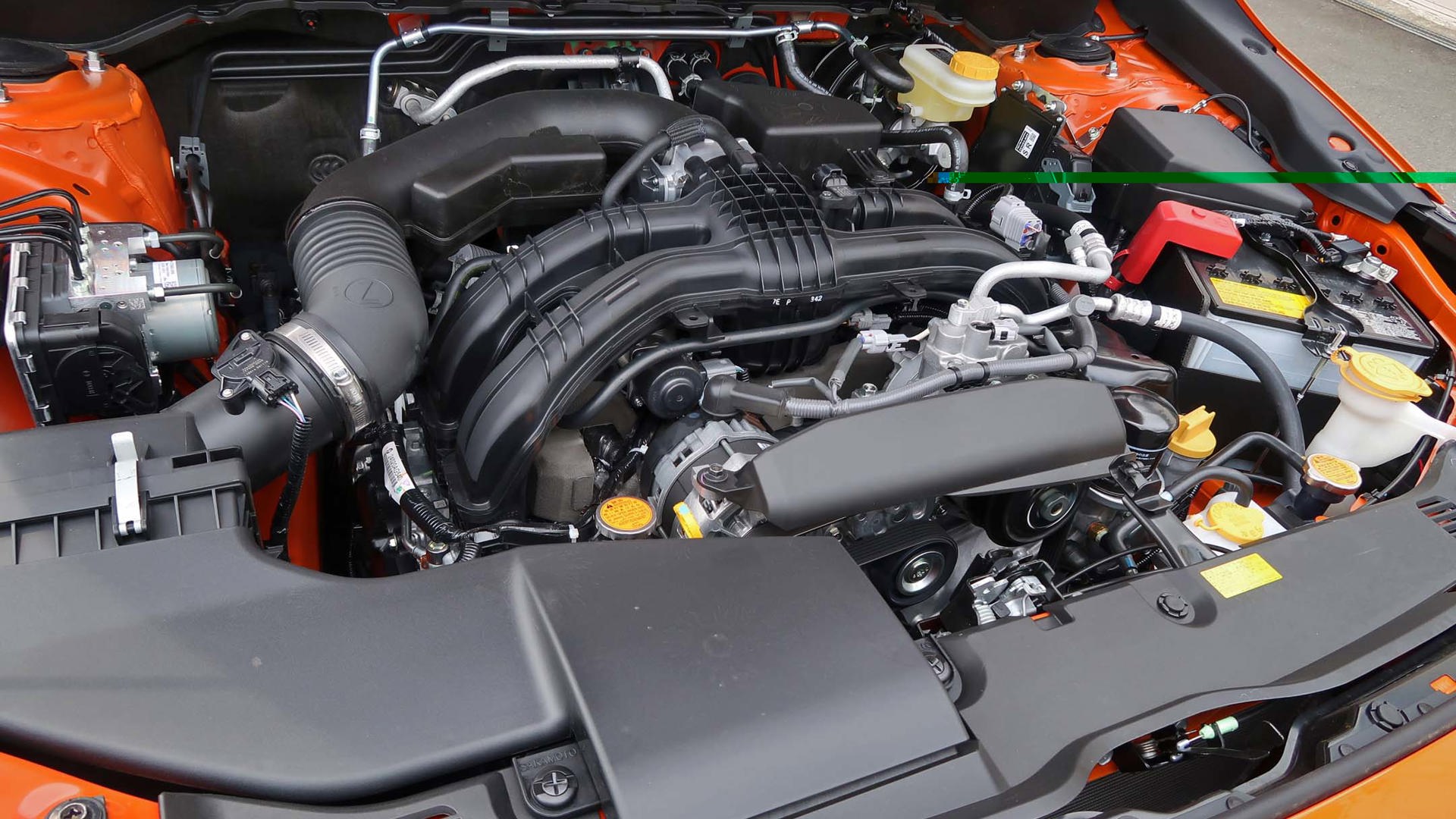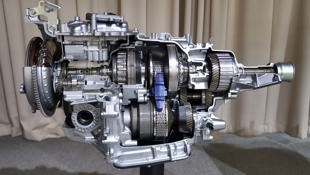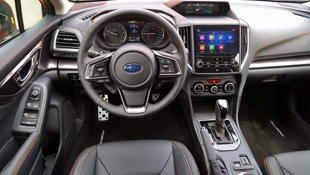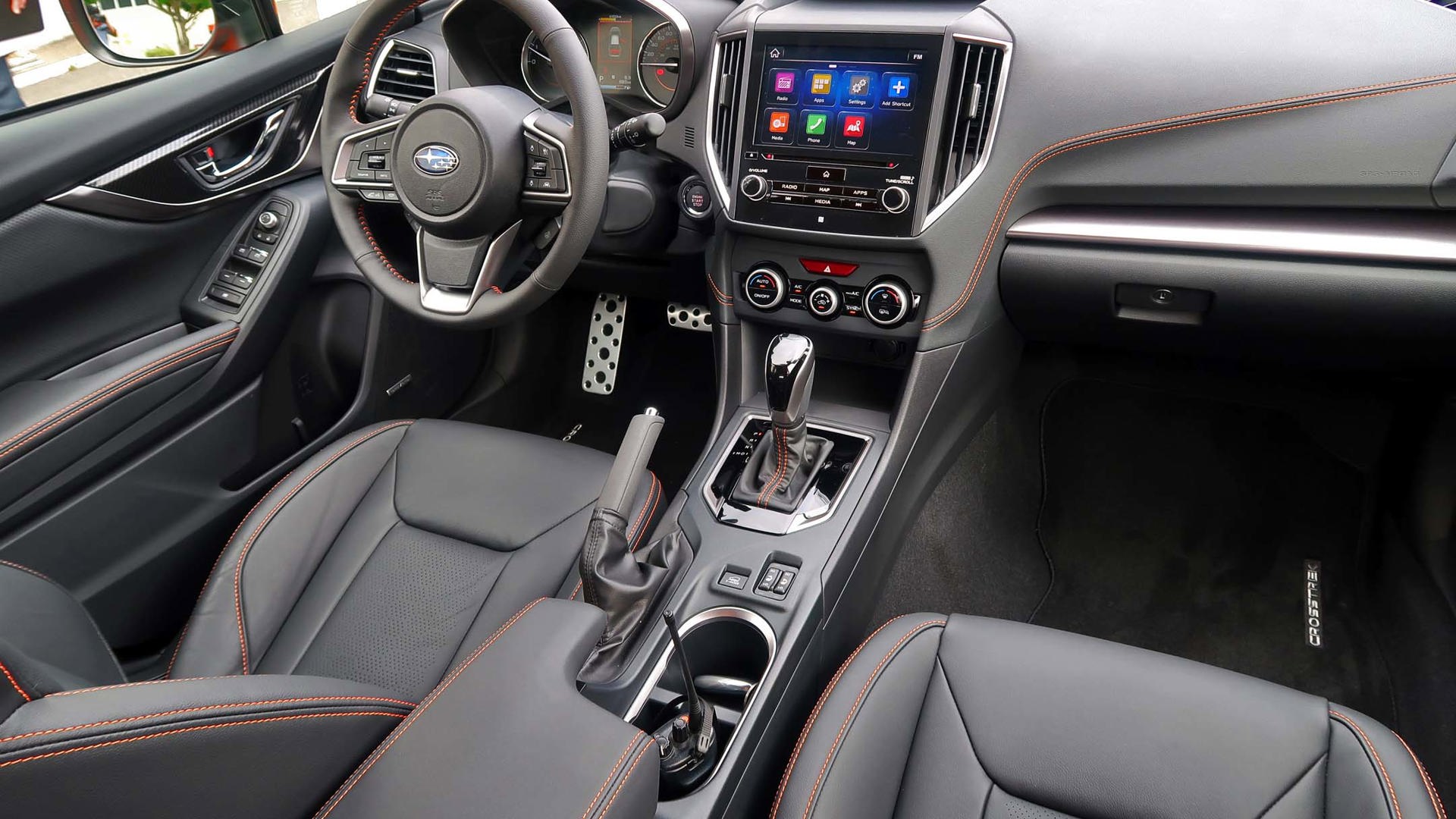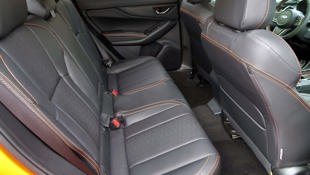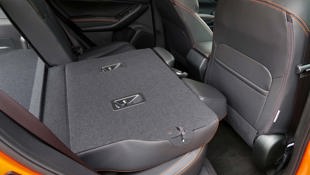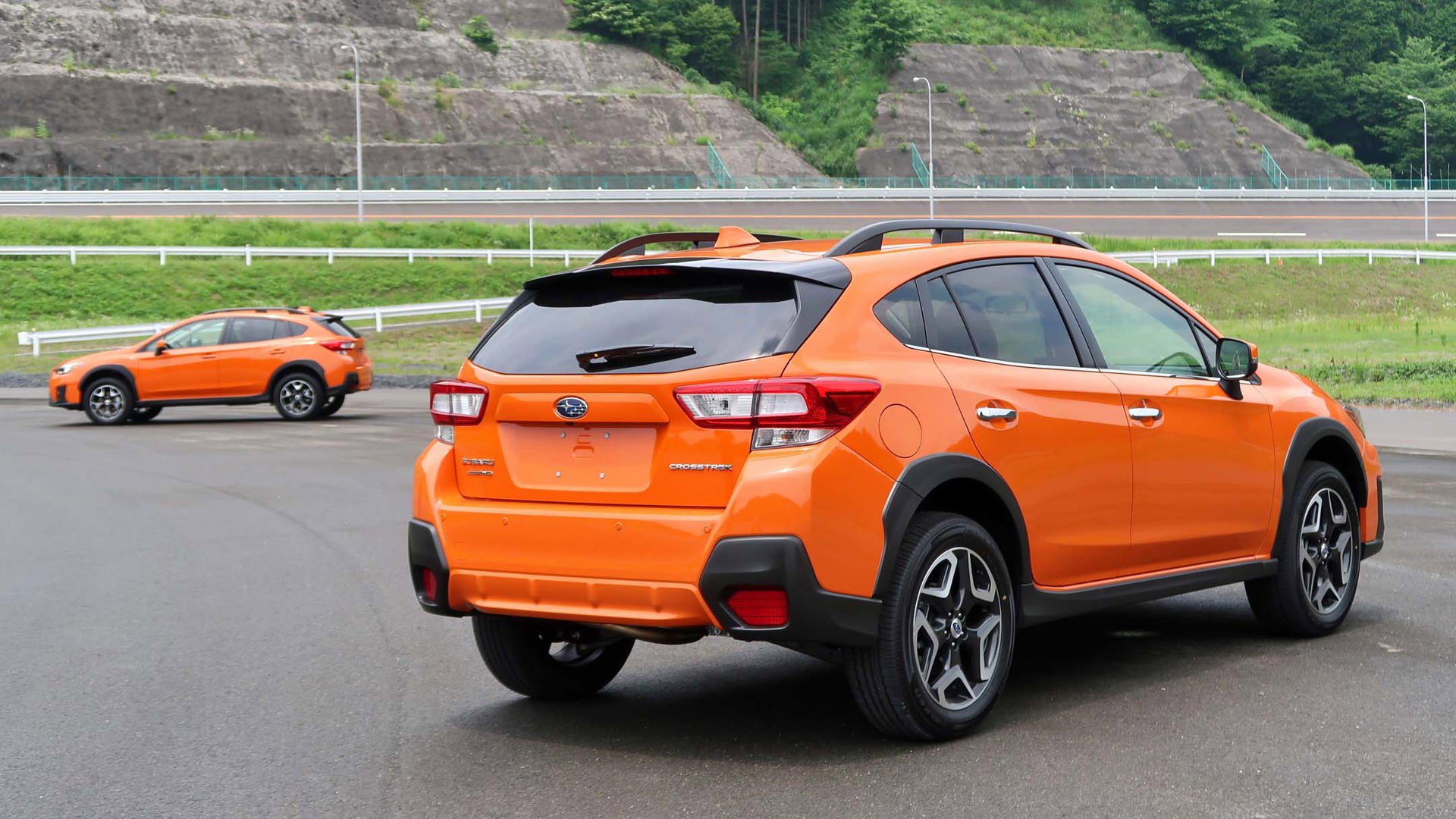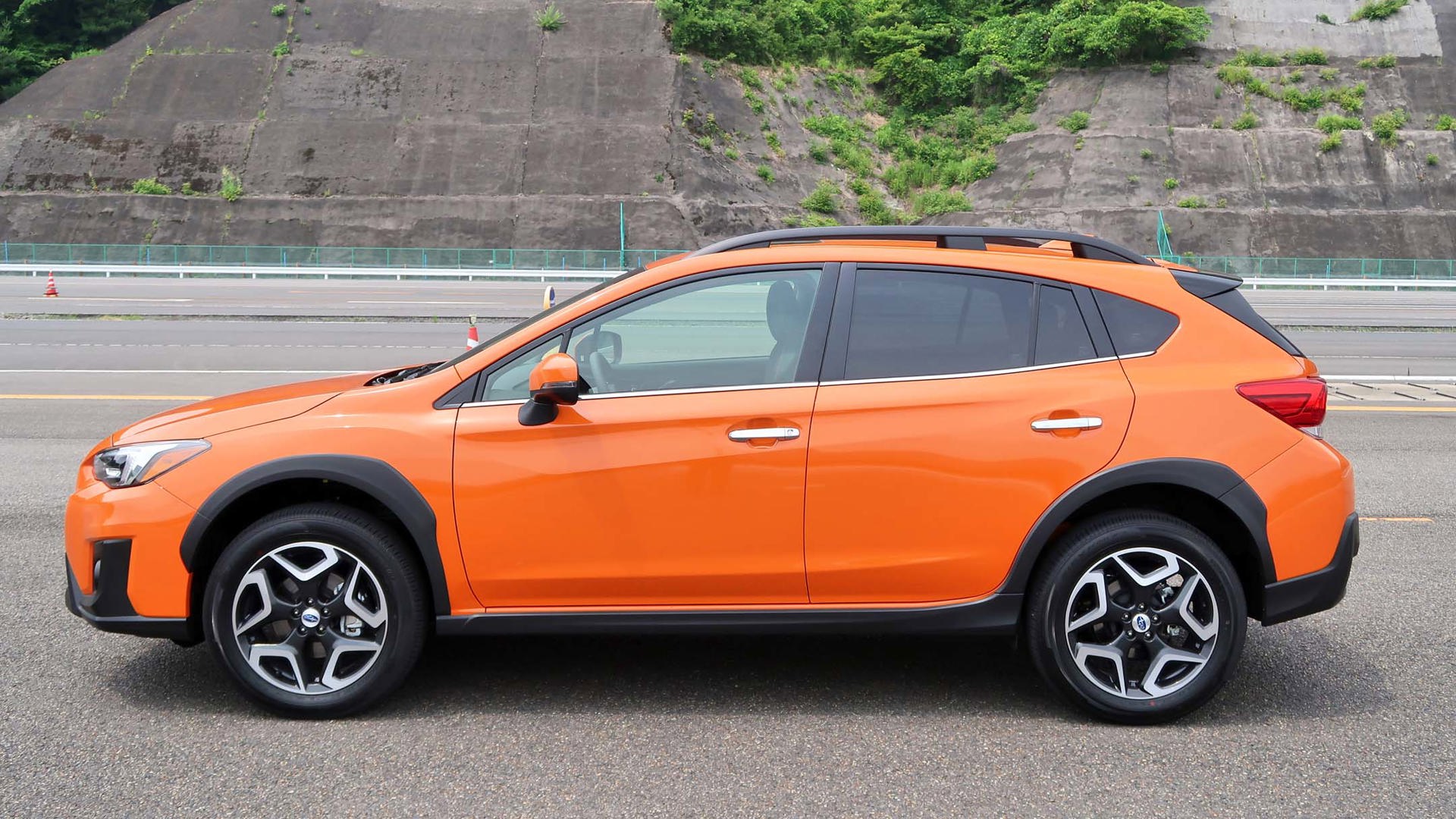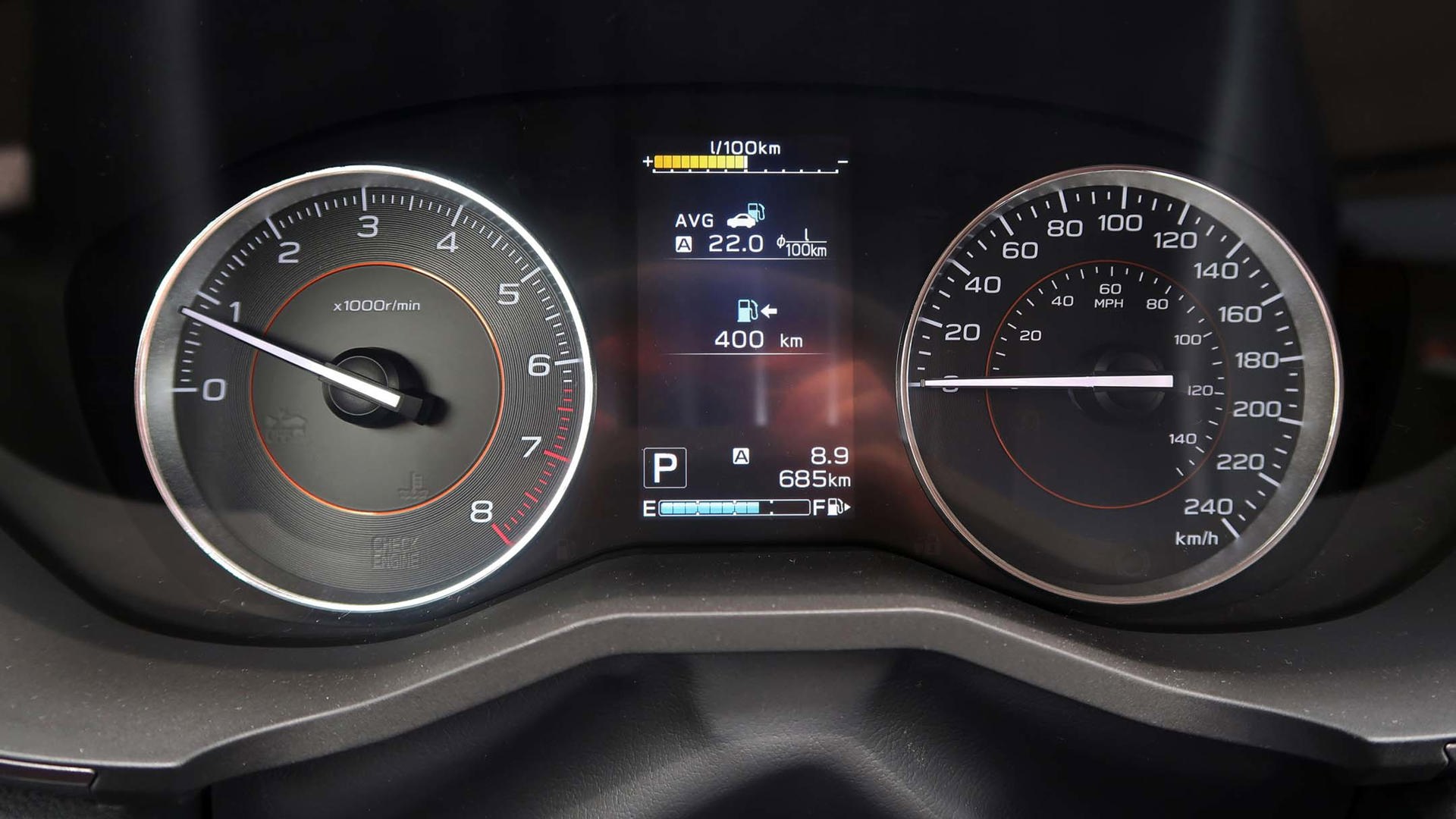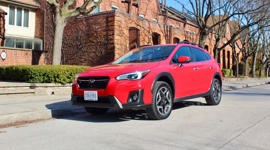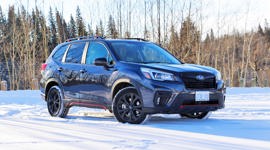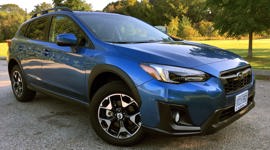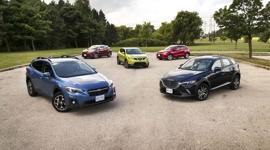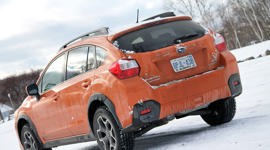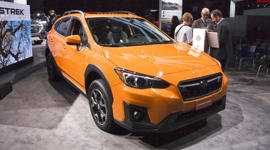TOCHIGI, Japan – Subaru’s proving ground is at the end of a winding mountain road, perched on top where nosy neighbours can’t look in. The high-speed track and gnarly handling course have seen their fair share of sports models, but they were also used to develop the new Crosstrek compact crossover.
If something can handle the stuff most people don’t throw at it, it’ll take the stuff they do.
This is the first time I’ve been on a steeply banked track, and I certainly never expected to lose my tall-curve virginity driving a sport-ute. But it’s the perfect opportunity to see how this thing handles at speed, along with a rough gravel road and hill-climb. If something can handle the stuff most people don’t throw at it, it’ll take the stuff they do.
This second-generation Crosstrek is tires-to-roof new. It’s the second model built on Subaru’s global platform, following the all-new Impreza. The Crosstrek shares that model’s underpinnings, but with unique suspension geometry and more ground clearance.
The new construction stiffens the Crosstrek by about 70 percent. That improves noise and vibration, which I really noticed in a back-to-back drive with the last-generation Crosstrek and its far noisier cabin. The wheelbase is longer, but the overhangs have been reduced to make overall length virtually the same. That quiet cabin is also roomier and has more headroom, although the vehicle’s exterior height doesn’t change.
The engine is still a 2.0L, horizontally opposed four-cylinder, but some 80 percent of the components are new. The output doesn’t change significantly, with horsepower rising to 152 from 148, and torque remaining the same at 145 lb-ft. But both now kick in 200 crank-spins earlier, and with better passing power at highway speeds. Overseas models get a automatic stop-start system, which shuts off the engine at idle, but ours do not. It may be coming, especially if the Powers That Be mandate it, but there’s currently no timeline for its addition, and frankly, I’m fine with that.
The stick shift now has six gears instead of five. The new CVT is well done, with seven pre-set points that make it feel like a regular automatic on acceleration, and with manual mode and paddle shifters on all but the base model. The CVT-equipped models also get far better fuel economy, rated at 8.8 L/100 in the city and 7.2 on the highway, versus a surprisingly thirsty 10.5/8.1 for the manual transmission.
Subaru’s “symmetrical” AWD is standard on all. The name refers to the driveline’s mirror-image layout, rather than the torque split. It is 50:50 with the manual transmission, while the CVT is 60:40 under most driving conditions, but transfers up to 50:50 when needed. All CVT-equipped models now include X-Mode, which can be activated at speeds under 40 km/h to help with rough or slippery going. The system changes the throttle response, maintains a lower gear, distributes torque evenly, and provides hill-descent control, which controls speed down a steep incline so you don’t have to use the brakes.
I started my day on the banked track, instructed to stay at 130 km/h. It takes a bit to get there – acceleration is smooth, but it’s a long way from breathtaking. The little trucklet feels very stable on quick lane changes, with very little body roll. Subaru attributes much of this to a rear stabilizer bar mounted directly to the chassis. It felt better-planted going into a left-hand curve than the last-generation Crosstrek, although I’m not sure if the actual difference was that pronounced, or if my perspective was due to driving from the right-hand chair in the Japanese-market comparison model.
But there was no questioning the new model’s performance on the handling course. The previous 14:1 steering ratio has been quickened to 13:1, similar to that of the BRZ. It’s fun to whip this thing around a sharp turn, and yes, I’m saying that about a crossover. It corners flat, with active torque vectoring that uses the brakes to tuck the wheels in. The Crosstrek also kept its nose in a straight line on a rutted gravel course, and soaked up most of the bumps for a surprisingly smooth ride, with only the deepest holes making an impression. Overall, acceleration isn’t eyeball-flattening, and the turning circle’s a bit wider than I expected, but it’s otherwise hard to find fault with this little ute.
Four trim levels are available, starting with a new, Canada-specific Convenience Package at $23,695 for the manual and $24,995 for the CVT; Touring at $25,295 and $26,595 for the two transmissions; Sport at $27,795 and $29,095; and the Limited, now available with the CVT only at $31,695. The top two can be optioned with EyeSight, a set of camera-based safety technologies, for an additional $1,500.
The exterior styling retains the last generation’s general appearance, with sleeker headlights (adaptive LED on the top two trims), more front cladding, and peaked wheel-opening cladding that looks to me like someone’s pencil slipped on the sketch pad and not in a good way. The rear hatch opening is wider and squared-off for easier cargo loading. Being more of a fan of the nineteenth hole than the eighteen before it, I’ll take Subaru’s word that three golf bags will easily fit inside.
The handsome interior is brought over almost verbatim from the new Impreza, and I love the simplicity of the big climate-control dials, hard buttons for the heated seats, and the large icon on the infotainment screen. The new third-generation audio system includes Apple CarPlay and Android Auto on all trim levels, while the Sport and Limited feature a larger touchscreen, and the Limited exclusively adds navigation. Seat fabric is determined by the trim level, with leather chairs on the Limited.
The EyeSight system is also updated, and in addition to providing adaptive cruise control and pre-collision brake and throttle assist, it now adds lane-keeping assist as well as a warning, using steering input to guide the vehicle back, along with high-beam headlight assist, and reverse automatic braking that jams on the binders if it thinks you’re going to back into something.
I liked the first Crosstrek for its compact size and nimble behaviour, and this new one is basically “the same, only better.” It doesn’t have the lowest starting price in the segment, but gets competitive once you option others close to its features list. And judging by what it can do in a secret location atop a mountain, it should be quite the performer on city streets.
Pricing: 2018 Subaru Crosstrek
Convenience (6MT): $23,695
Convenience (CVT): $24,995
Touring (6MT): $25,295
Touring (CVT): $26,595
Sport (6MT): $27,795
Sport (CVT): $29,095
Sport with EyeSight Package (CVT): $30,595
Limited (CVT): $31,695
Limited with EyeSight Package (CVT): $33,195
